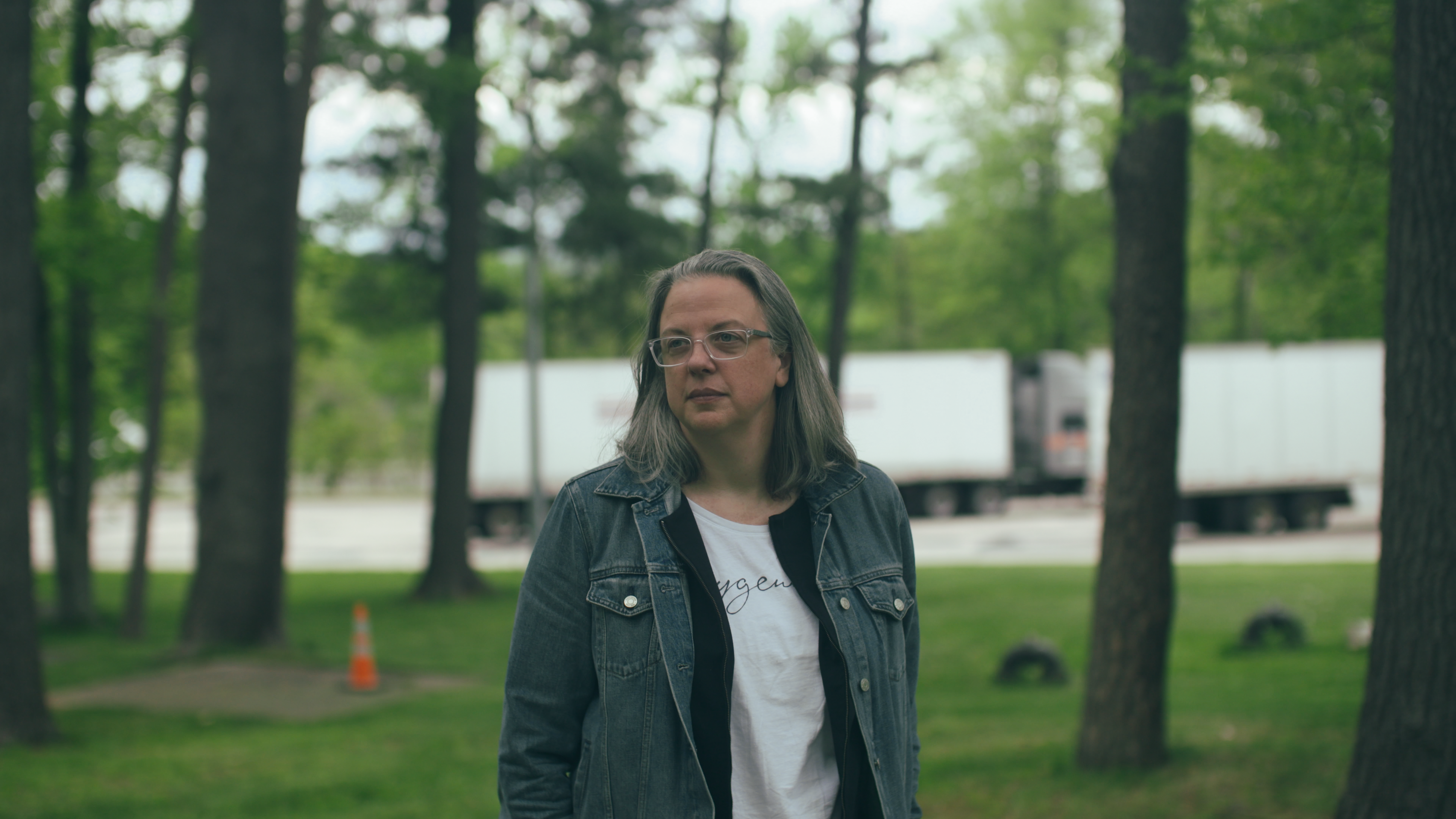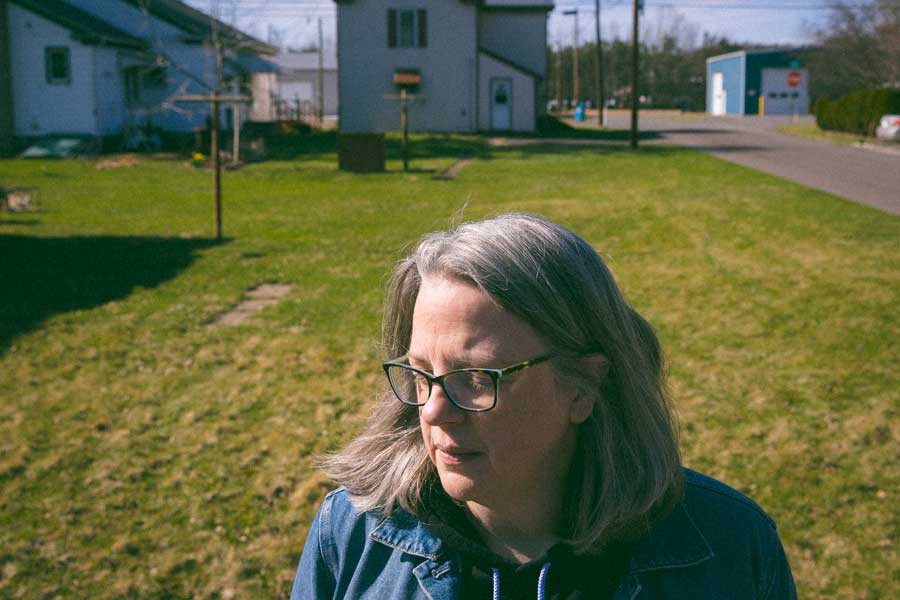
An in-camera double-exposure photograph of Kate Price overlaid with the woods of a Pennsylvania rest area, where she remembers being taken as a child.
Kate Price remembers something terrible
An authority on child sex trafficking, she spent decades trying to understand whether the unthinkable happened to her, too.
Content warning: This story includes descriptions of the sexual abuse of children.
There used to be a garage behind the house on the corner, but it’s long gone. Today, the cement path that led to it ends in the middle of a lawn. A basketball hoop once hung from the side of the building, neighbors remember, and, if they got a glimpse of the interior, they saw auto parts strewn about and a pit in the floor where someone could climb in to change a car’s oil. But none of the neighbors recalls ever setting foot inside.
Kate Price remembers.
We were sitting in a rental car I’d parked behind the modest putty-colored home in central Pennsylvania on a cloudless autumn afternoon in 2019. Peering through dark sunglasses, Kate carefully studied the place where she grew up decades ago. To the outside world, hers was a typical working-class family living in a typical working-class home, with a playhouse and a brick barbecue pit in the backyard and tidy hedges separating their lawn from the next. The turmoil was on the inside, though sometimes it spilled into public view.
Kate remembers being 8 years old and screaming in terror, scrambling down that cement path after her father had ripped a bedroom door from its hinges in his fury. Her mother chased after her, grabbed her by the waist, and whispered pleadingly, “What if the neighbors hear?”
She remembers even darker moments, too, unfolding where no one could see. Even now, the smell of Budweiser brings back a nauseating flood of images. She remembers her father lifting her from bed late at night and carrying her, dazed and half-numb, outside. She remembers being lowered into that pit in the garage, wrapped in a canvas blanket that reeked of motor oil and booze. She remembers the laughter of the men above and the smell of their beer as, one by one, they entered the pit where she waited, trembling.
She remembers they were taking turns.
For most of her adult life, Kate, now 52, has been trying to understand what happened to her in that old garage. Why her father was on the CB radio talking about her to people with handles such as “Chicken Plucker” — a name that’s become an obsession of hers — and then taking her to meet them. Why no one stopped him. And why, years later, when more memories she had locked away came flooding back, no one believed her.
The challenges of Kate’s journey have been formidable. Her father — and many of her relatives — insists nothing at all happened in the garage or anywhere else, that Kate is imagining things or making up stories to extort money from her family. The county doesn’t have records of police investigating any goings-on at her childhood home, and her father has no criminal record. To the contrary, his volunteer work with cancer patients at a hospital was once written up in a newspaper. As for Kate’s mother, she died in 1993 and took anything she knew to the grave.
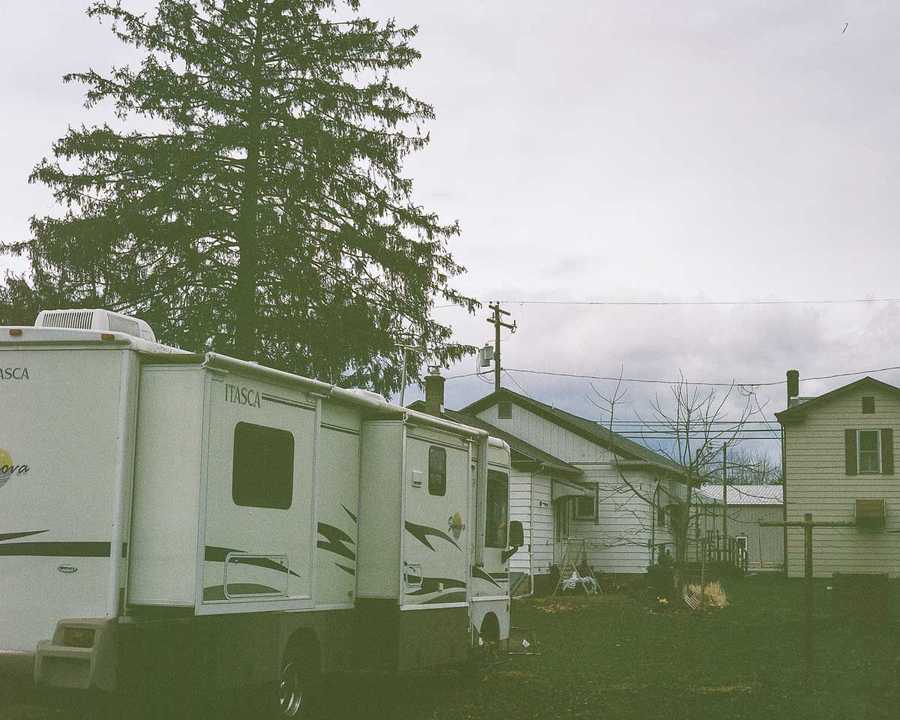



Several photographs of Kate’s childhood backyard, where the garage used to be.
Listen: Kate and Janelle drive to Kate’s childhood home as she describes her memories of it. Vida was a neighbor.
KATE: There used to be hedges all out front.
JANELLE: OK.
KATE: I would mow this grass. That was my room up there in the corner.
JANELLE: Wow.
KATE: That's the living room. That's another living room. That up there on the right was my sister's room.
JANELLE: OK
KATE: Yep. My dad built that barbecue. That's the original clothesline.
JANELLE: So this was all your property?
KATE: Yes, that was all our property. That's when I ran out the door and my mom said, “You know, don't um don't want Vida to hear.” I ran down this sidewalk. That was the sidewalk. And then the garage was back there.
JANELLE: It was all the way back here?
KATE: Yes, it was back, it was back on this road, on this alleyway.
JANELLE: OK.
KATE: Backed up to it. We used to have a ton of trees were all along here. And my dad built like a playhouse. But it was so close to the cemetery. Right there is the cemetery
KATE: You know, I don't feel triggered. I don't feel – I feel sad.
JANELLE: Yeah
KATE: You know, more than anything. It just wasn't a happy place.
JANELLE: Yeah
KATE: Nothing happy about it. I'm happy that the sidewalk to the garage is still there, is like proof.
JANELLE: Yea
KATE: You can tell there was a structure there. You know, there is remembrance.
(Because Kate’s father has not been charged with a crime, the Globe is not naming him, his current or former places of residence, his late wife, or relatives that share his last name.)
Kate’s memories are seared into her brain, but they are memories from young childhood, a part of life that eventually fades to shadows for most of us. Equally problematic, in the minds of those disinclined to believe her, some of her memories returned to her during psychotherapy, using a technique that some psychologists say subdues traumatic memories, making them less vivid. Kate’s recollections of her abuse made her a case study in a best-selling book with a chapter on the technique — it’s called eye movement desensitization and reprocessing, or EMDR — but it didn’t resolve whether what she remembered was literally true.
But Kate Price is formidable, too, and she has spent more than two decades searching for answers to prove that the things she believes happened to her are real. She fashioned herself into an archaeologist of her own memory, a detective of her own history. She grew up to become a recognized authority on child sexual abuse and trafficking with a doctorate and an appointment as a visiting scholar at Wellesley College. And a decade ago, she connected with me, a professional journalist. She hoped I might find evidence that would make sense of her childhood.
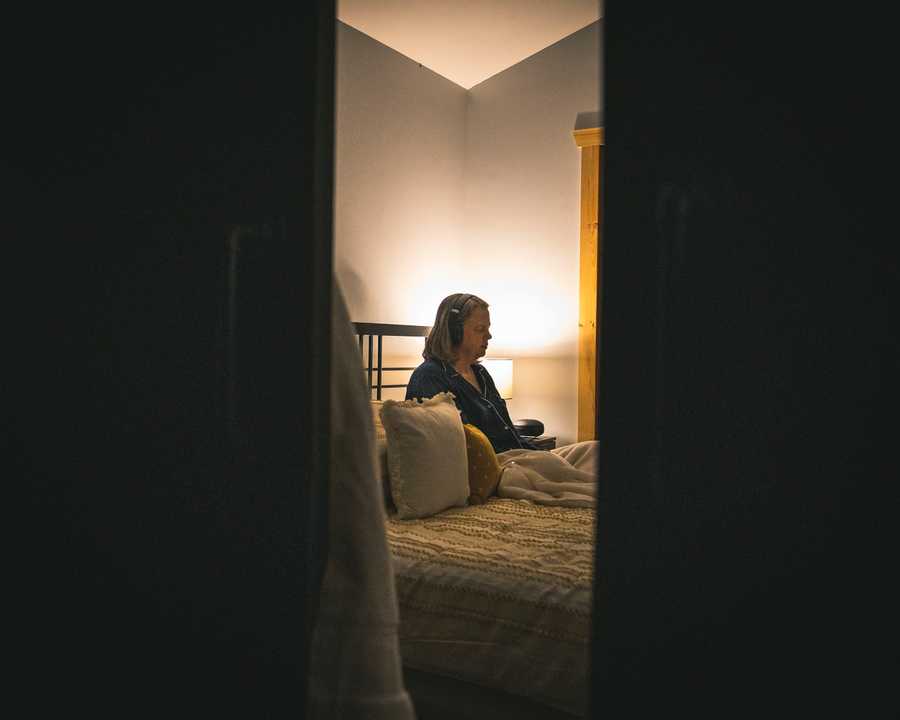

Kate meditates in the room of the Airbnb where she stayed while visiting her childhood hometown this spring. The woods at the rest area where Kate remembers being taken as a child.
One more thing: Kate does not give up. Ever.
Kate knows things happen behind closed doors that we are unwilling to see. She understands the complexities that accompany traumatic memories, including “recovered memories” that can return to us years later, sometimes in ways we don’t expect. Yet she was willing to risk everything — her family ties, her professional reputation, her very sanity — on her memories being true. She was convinced that, if she just looked hard enough, she could find the evidence she needed.
“I’m happy that the sidewalk to the garage is still there,” Kate said, looking out the car window at her childhood home. “It’s like proof.”
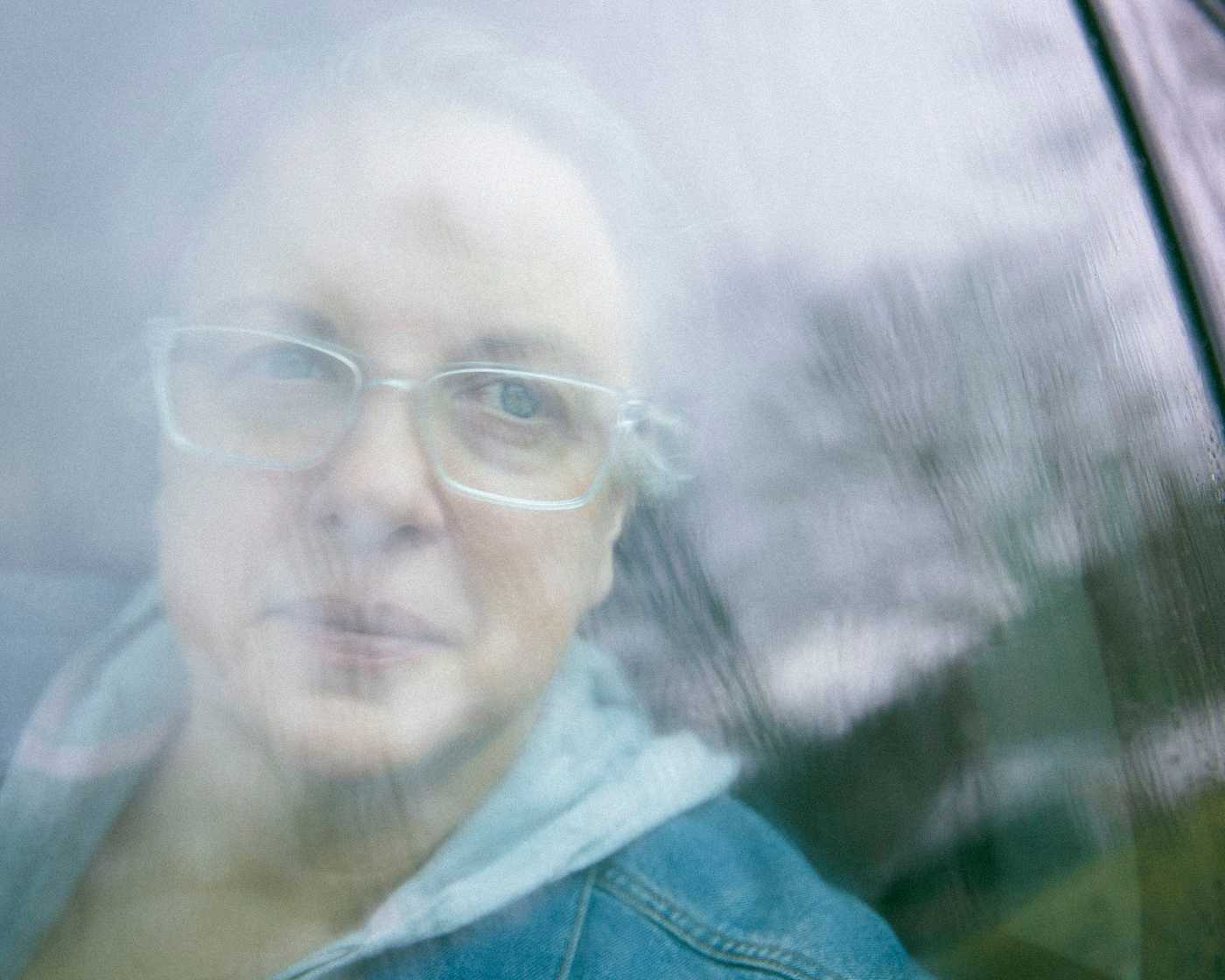
A decade ago, I went to church on a Saturday morning to research a story. What I found would change the course of my career.
It was May 2012, and the Sisters of St. Joseph of Boston were hosting an anti-trafficking coalition meeting in their Brighton sanctuary — their Motherhouse. Kate was filling in for a friend who was supposed to address the room, and I remember her seeming nervous as she approached the lectern. As she looked out at the scores of nuns, she admitted she’d been expecting a roundtable discussion, not an audience of hundreds.
But Kate was equal to the task. Standing nearly 6 feet tall, her brown hair was streaked with gray and it fell onto her broad shoulders as she began telling her story.
“Growing up, I was prostituted by my father,” she said. She alleged the abuse started when she was a small child and continued until her early adolescence. My jaw went slack. Gasps echoed off the sanctuary’s walls.
When she was just a child, she continued, her father had sold her for sex to truckers who drove along Interstate 80 in Pennsylvania. She said her hometown was the type of place where she could go to school with a black eye and nobody said a thing, because her family was seen as one of those where “that’s just what happens.”
“It’s kind of hilarious — I mean, I live in Wellesley now,” she said of her posh, buttoned-up Boston suburb. Whereas back in her hometown, “I’m still seen as total white trash.”
Kate had defied the odds, getting out of her hometown, building a happy family here in Massachusetts, and pursuing a career in academia. At 41, she was working at the research and advocacy group Wellesley Centers for Women at Wellesley College. She focused her research on the commercial sexual exploitation of children because of her past experiences, and those experiences, she explained, now informed her work.
Kate told the anti-trafficking coalition that Americans celebrate childhood as a time of innocence while the media and consumer culture relentlessly sexualize children. No wonder sexual abuse is rampant, she said. (Estimates vary, but the Centers for Disease Control and Prevention says that 1 in 4 girls and 1 in 13 boys are victims of sexual abuse.) “We are more committed to preserving this ideal of innocence, rather than children.”
I’d attended the event hoping to interview nuns for a story for the magazine where I was working. But from my seat in a pew, I struggled to reconcile the academic at the lectern with the horrors she’d just described. How could this woman make the worst thing that happened to her in her life into her life’s work? I wondered.
So I approached Kate at the front of the sanctuary after the presentation. If she ever wanted to share her story, I said I’d be interested in talking to her. I never imagined this would be the start of the longest journalism project of my life, spanning 10 years, two jobs, and the births of my two children.
We started corresponding. It quickly became clear that, even though Kate spoke confidently at the convent, she was still quite nervous about telling her story to a broader audience. Early on in our interviews, she balked when I told her I’d need to approach her father to get his response.
Though she’d become more prominent in her field, there remained a lingering sense of hesitation in Kate. She believed her childhood traumas were real. But she knew that back home in rural Pennsylvania, she was viewed as a liar, someone who betrayed her family.
“My absolute worst fear is that they would somehow come out and say, ‘You didn’t do this, this never happened to you,’” she told me over dinner one night in August 2012. If I was going to tell her story, she wanted to do everything she could to search for evidence that the abuse had happened.
Kate and I set some parameters. “This is, and has always been, your story to tell,” I’d remind her, and I was ready to pull back whenever she might feel overwhelmed. There were some calls or interviews she found too difficult to handle. Others I made on my own to try to verify her memories.
Kate is married to a journalist, so she had a better understanding than most about how I might question her story. “There’s a very good chance she could say something that I don’t like or agree with,” she’d tell people we were speaking with. In the end, we were on parallel searches into the past — she as a survivor, me as a journalist — and we both knew those paths could diverge.
My absolute worst fear is that they would somehow come out and say ‘You didn’t do this, this never happened to you.’”
— Kate Price on her fear she wouldn't be believed in Pennsylvania

The journey through Kate’s childhood memories would take us to musty town archives, retired police officers, highway truck stops, and into the sitting rooms of friends and relatives Kate hadn’t spoken to in decades.
We’ve each changed plenty over the past 10 years. Kate, identifying herself as an abuse survivor, would raise more than $50,000 in a GoFundMe campaign to help her earn a doctorate in sociology from the University of Massachusetts Boston. Her award-winning dissertation compared states that criminalize sex-trafficked children versus those that treat them as victims (Massachusetts remains among the former). Her work informed the creation of a new anti-trafficking law in Florida, and she is currently advising a clinic aiding trafficking victims at the center of Boston’s opioid crisis at Mass Ave. and Melnea Cass Boulevard.
During the same period, I gave birth to a son and a daughter and joined the staff of The Boston Globe. I’m now the age that Kate was when we met. Her hair is now entirely silver — she blames graduate school for that — and I’ve watched as she’s become more open about telling her story. Her confidence in it has now eclipsed her fears.
For me, becoming a mother strengthened my resolve. It’s one thing to empathize as someone shares memories of horrific traumas from growing up. It’s another thing entirely to hang up the phone and pull your child into your arms, riffle your fingers through their curls, and pray they’ll stay out of harm’s way.
Kate grew up in a tiny sliver of a Pennsylvania town on the banks of the Susquehanna River, with a population of less than 1,000. Coming off I-80, you drive through a dog food factory complex, and, soon, can see most of the circumscribed world of her childhood: the Methodist church, the police station and fire department, and the school where she went to kindergarten. It’s a part of the world where families put down deep roots and the same names appear on mailboxes generation after generation.
Kate’s father grew up dirt poor in a nearby town, living in a section known as the “Bloody Third” for its frequent flashes of violence. He and Kate’s mother bought their first home for $8,500 in the fall of 1965, on the day before her mother’s 20th birthday. Children soon followed — daughter Kari in 1967, Kate in 1970. To support his growing family, Kate’s father worked his way up from a job at a grocery store to the facilities department at a hospital, while their mom stayed home with the girls.
Her father appeared to adore the tomboyish Kate, who often wore a Phillies baseball cap over her crop of blond hair. He called her Butch, and treated her like the son he didn’t have. They’d watch sports on TV and go fishing down at the river.
“She was tall, beautiful, and just the coolest chick,” recalls Julie Sitler, who met Kate back in the third grade and became a constant companion, tagging along with Kate’s family on trips to the Jersey Shore and the annual Bloomsburg Fair. Sitler felt lucky to have her as a friend. “I loved going to her house,” she says. It always smelled warm, like a wood-burning stove. She remembers thinking Kate must be “the luckiest freaking girl in the world.”
But Sitler also remembers that Kate seemed uneasy about the garage, which was off-limits to the kids. Sitler had been fascinated by the building and wanted to explore. Kate wouldn’t have it. “It was creepy but I never went in,” Sitler recalls. “She wouldn’t let me.”
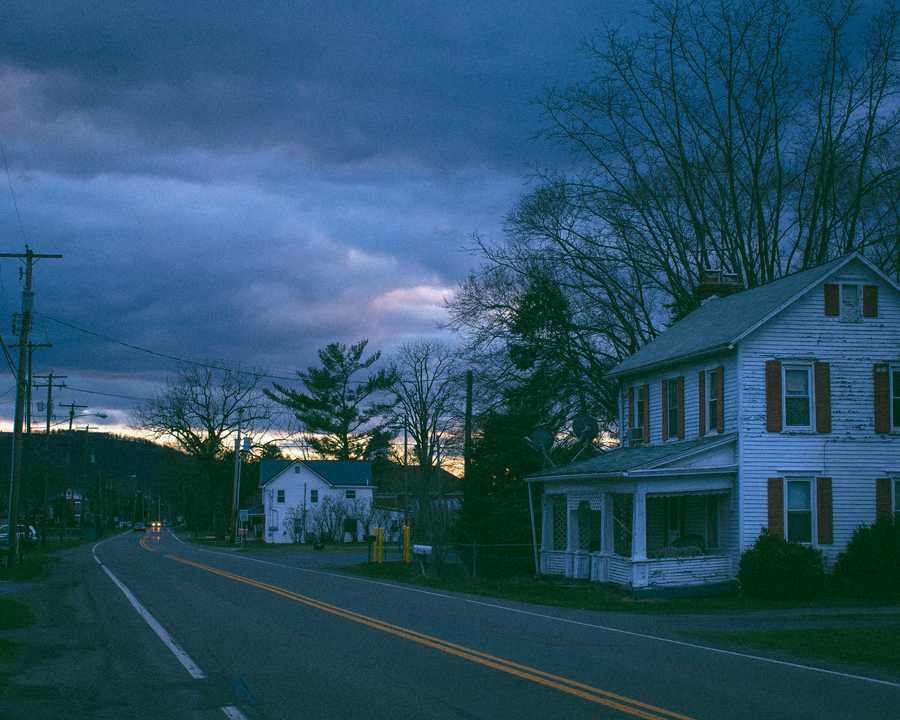
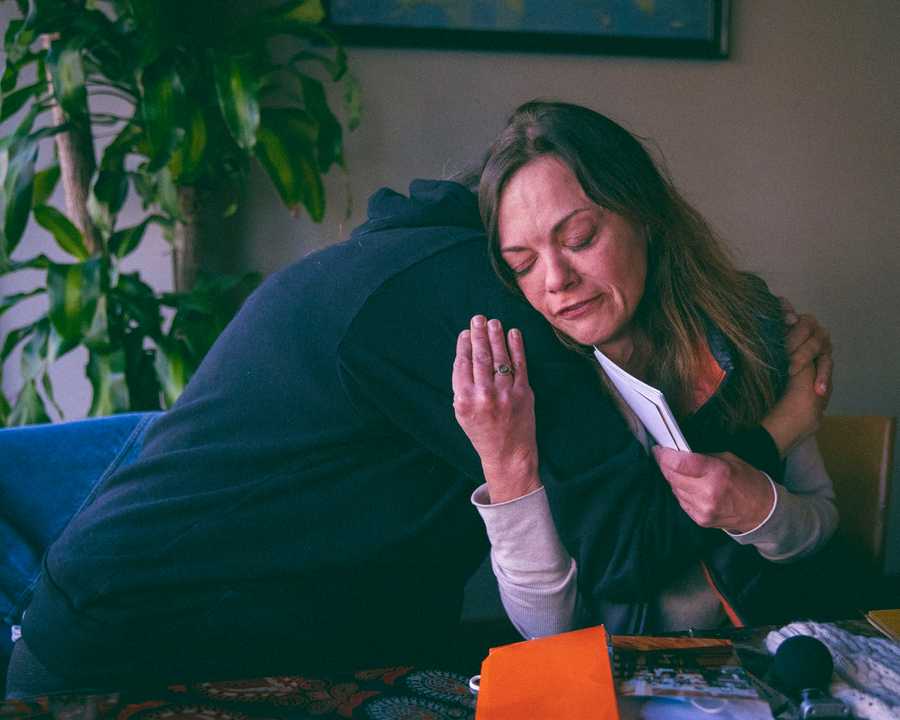
A view of Kate's hometown. Kate hugs her childhood best friend, Julie Sitler. “She was tall, beautiful, and just the coolest chick,” Sitler says.
In Kate’s memory, her childhood comes back as scenes of light and darkness. She had things that brought her joy, like curling up in a window seat in the children’s room at the public library. Or singing “Jesus Loves Me” at church. And she had swimming. She loved the ocean and was a natural talent in the pool. Stretching, kicking, she could forget the aches in her body.
But the darkness would always return.
It happened for the first time in the back room of a bar, Kate recalls. It’s her earliest memory so it’s hard to know for sure, but she believes she must have been around the age of 3. She was at a bar that her grandmother’s boyfriend owned, and her father took her to the back room to change her diaper. For Kate and Kari, the bar was like an extension of their living room, a place where they celebrated holidays. In the back room, there was a small bowling game that Kate would play with.
Kate says she has never forgotten the pain of her father sexually assaulting her, accompanied by the sound of clinking glasses beyond the door. And she remembers the feeling of her body going numb. It all happened so fast.
She remembers later instances of abuse happening at night, in her bed. Over time, it would migrate to the garage. And it would start to involve others.
Kate remembers it was dark the first time she was taken to a highway rest area. She thinks she would have been around age 7, so when she saw some round concrete slabs near the parking lot, she assumed it was a playground. Where are the toys? Where is the seesaw? she thought. Instead, she was taken back into the woods. She remembers the crinkle and smell of the leaves and the greasy hands of strangers, men she’d later come to understand were truckers. She imagined ripping out the trees by their trunks and smashing people. “All I remember thinking is: All the cars are going by. Don’t they see me? Don’t they see me? It’s like I didn’t exist,” she says. “I was just trapped, powerless, utterly powerless.”
She was constantly terrified that she might die. “You make me do bad things,” she remembers her father telling her.

A question sometimes left unspoken when Kate tells her story is: Could she really remember what happened to her at such a young age?
Scientists are still trying to understand exactly when we first begin forming memories as children. For a long time, researchers believed that memories typically begin lodging in our brains around age 3½, though a study published last year in the journal Memory suggests they could actually start a year earlier, on average, when we’re still toddlers.
Most people don’t recall these early memories. Researchers say children are often able to vividly remember moments and details from their early lives until about age 6 or 7. Then, their brains start to change as language develops, and things that were crystal clear to a first-grader become less so over time. Those early memories are replaced, or start to be defined differently as we grow.
But some scientists now believe these first memories linger within us, and shape who we become. And the memories that are the most emotional — the best things that happened to us, and the worst — are the ones that are said to stay with us the longest.
Even if many of us never find them again, they may never really be lost.
Kate remembers her abuse continuing until about 1982, when she was 11. As a child, she didn’t have the means to understand it as wrong — she says her father had always couched it as a special time between them, something special girls got to do. As an academic, she knows now that the neural pathways in an abused child’s brain get rewired such that love and abuse become intertwined. So when her father moved out, leaving her mother for his girlfriend, Kate wasn’t entirely relieved. She felt like her world had been upended.
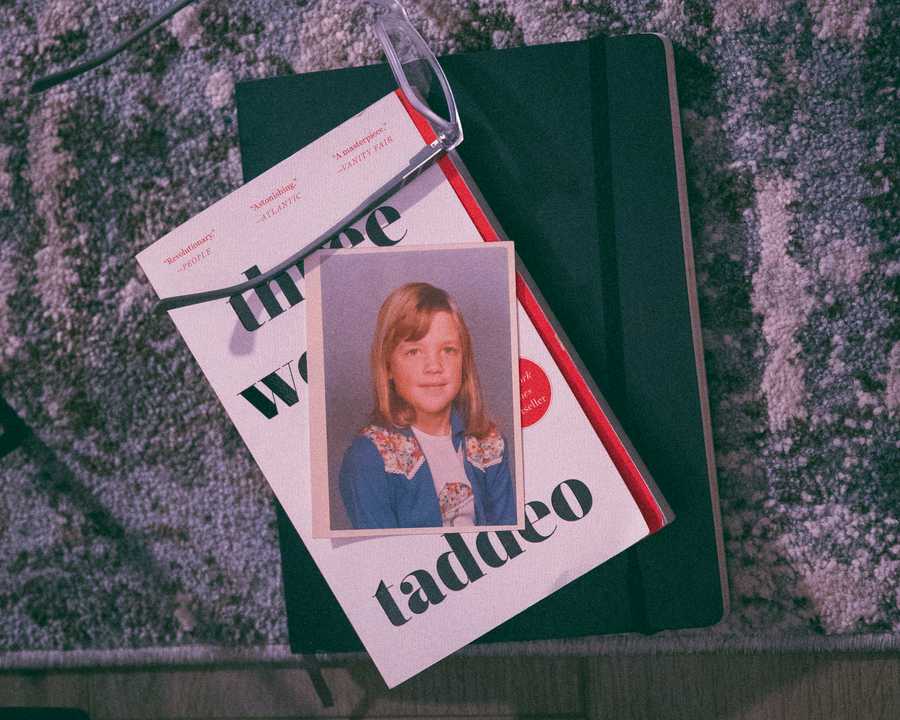
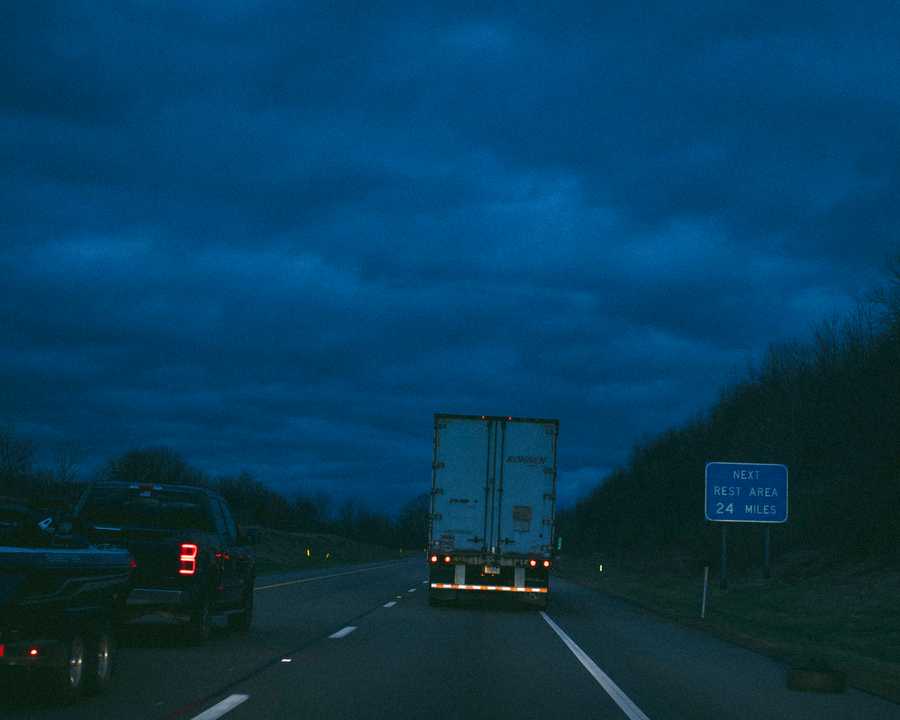
Kate keeps a photo of herself in her journal, taken on her first-grade school picture day. A truck passes a sign for the rest area.
Some who knew Kate’s father weren’t sorry to see him go. They say now that they didn’t suspect sexual abuse, but they saw him as toxic. Mary Dunstan, a close friend of Kate’s mother for decades, called Kate’s father “a manipulator.”
“Some people are just like that,” she says. “They can charm anybody into doing anything.”
“He was a nincompoop,” says Joyce Kindig, who had known the family for years. “He always thought he was right about everything. He wasn’t a regular guy.”
After her father left and filed for divorce, Kate’s mother struggled to get by, and had few people she could depend on. Kate’s grandparents were largely out of the picture; her father’s parents were both alcoholics, and Kate’s mother had lost her own mother at 16 and always had a strained relationship with her father.
But the estrangement could also have been due to another incident that Kate remembers: She says she was sexually assaulted by her maternal grandfather when she was 6. She remembers it happened in his basement. She was wearing an Easter dress.
Isolated from other family, Kate’s mother scrimped. Neighborhood kids knew not to ask for seconds if they came over for dinner, and the girls remember going hungry some nights. But they both adored their mother, and made the best of their new life.
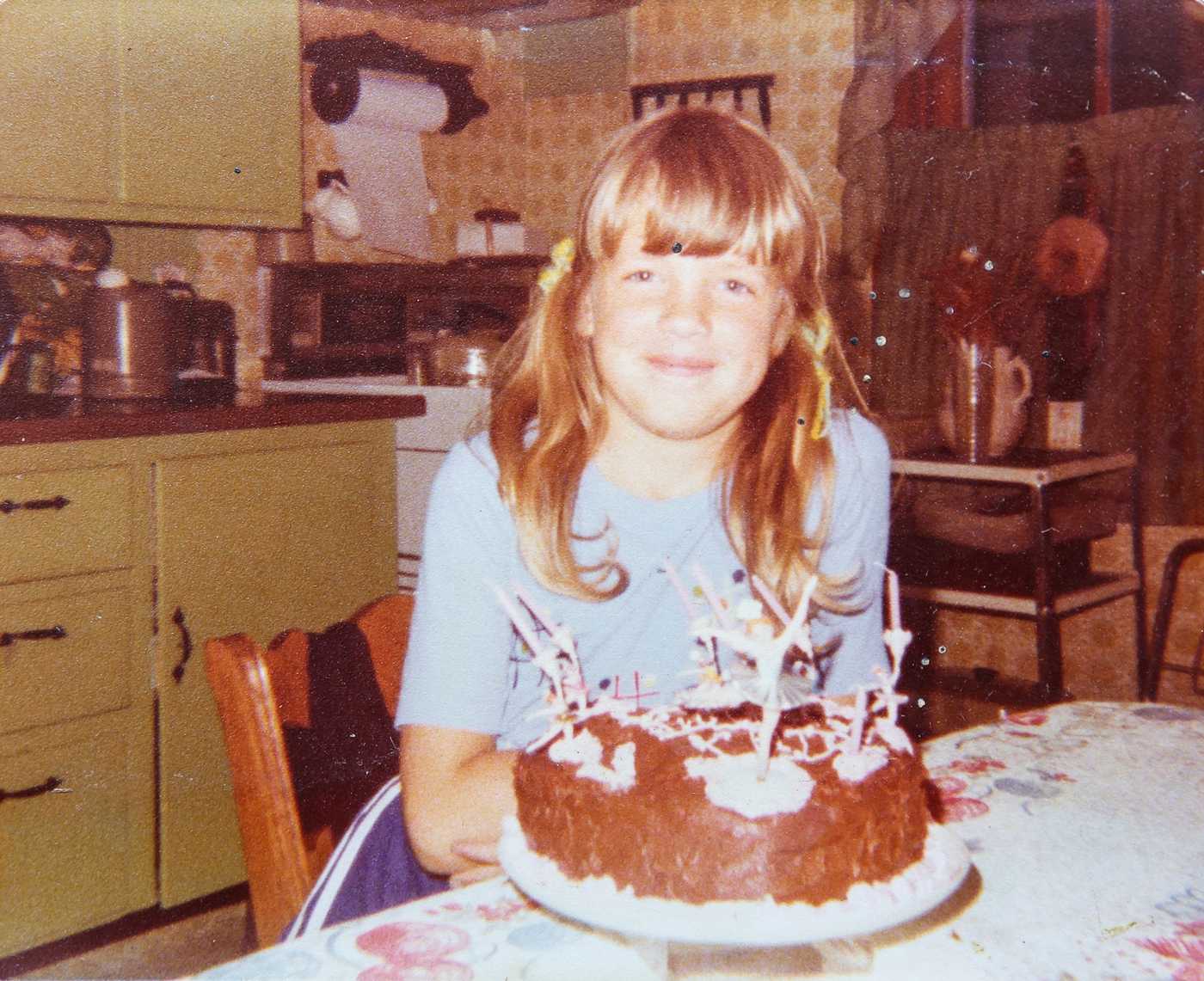
Mary Dunstan says Kate’s mother was intensely private, and never spoke with her about abuse or any troubles with Kate’s father. However, when Kate’s father suggested he’d like to come home in 1983 — “Without a doubt you are a perfect mother and wife,” he wrote her in a letter — Kate’s mother had a simple answer: No.
By the time she entered high school, Kate was depressed and couldn’t articulate why. Around age 15, she attempted suicide, swallowing a bottle of antibiotics that did little more than turn her stomach. She cried constantly, and wore baggy clothes to hide her body, fearful of attention from boys. At 17, she ran away to visit a friend at Smith College. After she returned, a high school counselor suggested Kate see a therapist. She paid for the sessions herself with money from her part-time job. Kate never told her mother.
She recalls having a sense, deep in her body, that she’d been wronged, but tried to keep her memories at an emotional distance. She recalls feeling responsible for what had happened to her, at fault for the breakdown of her family.
Kate stayed in touch with her father and even lived with him briefly after he moved out of state in 1987. Over time, Kate says he admitted he’d had an alcohol problem when she was young, but he never directly acknowledged any abuse. He did, however, talk about his family’s history of addiction and dysfunction. She remembers him once telling her, cryptically, “What happened to you, happened to me.” Looking back, Kate believes her father was saying that he had been abused as a child.
Kate’s mother was determined to get Kate out of rural Pennsylvania, eventually persuading her to move to Boston for college. In 1990, Kate began an environmental education program through Lesley College. She studied abroad in India, and worked a summer in Colorado.
But Kate dropped everything and returned home in 1992 after her mother was diagnosed with cancer. She took a year off from college to care for her, before her mother persuaded her to resume her classes. She didn’t tell Kate that a bone marrow transplant had failed.
The day after Thanksgiving in 1993, her mother died. Kate and her sister, Kari, had been taking turns at her bedside, and Kari was with her the night before she passed. Her last words were plaintive: “Was I a good mother?”
For Kate, that was never in question.
Kate sobbed until her eyes were nearly swollen shut one snowy evening in 1998. She was 28 years old, alone in her Cambridge apartment, and had been crying nonstop ever since she’d seen a depiction of child abuse in the film Bastard out of Carolina a few days earlier.
That night, around 10 p.m., something shook loose.
She recalls images enveloping her in a rapid-fire slideshow of terror: Flannel shirts. Belt buckles. Leather boots. Strong cologne and the smell of motor oil. Were there dozens of men? Even more? She felt disoriented as the onslaught revealed a thought she’d been unable to fully articulate. The impressions that had been flickering in the recesses of her mind suddenly snapped into focus.
Oh my God, I was raped. I was raped a lot by a lot of people.
As the magnitude of that horror began to set in, she wasn’t sure she wanted to live long enough to fully comprehend it.
In a panic, Kate called the therapist she’d been seeing at Harvard University, where she worked: She needed help, now. The therapist told her to hail a cab and make her way to campus.
The cabdriver cursed the snow as he weaved through the narrow Cambridge side streets. “I’m sorry,” she told him, as he let her out into the slush outside Harvard’s gates, “but if you hadn’t driven me here I would have killed myself.”
A nurse met Kate at the door of the infirmary and brought her to a hospital bed with crisp, clean sheets and a blanket, and brought her a cup of warm milk. “It was the most taken care of I’d ever felt in my life,” Kate says.
The next day, Kate met with trauma psychiatrist Dr. Bessel van der Kolk, whom she had been seeing for nearly a year. He’d gained acclaim for his research on post-traumatic stress disorder in Vietnam War veterans and had begun experimenting with a new and somewhat controversial therapy: EMDR. The treatment involves a therapist moving their fingers back and forth about 12 inches in front of a patient’s eyes, while asking them to recall and process traumatic memories.
To van der Kolk, EMDR sessions provide the opportunity for his patients to work through trauma and take back agency of their lives, sometimes imagining themselves responding in ways that hadn’t happened in real life. As a patient recalls a traumatic experience, he urges them to notice what’s happening to their body. How long have they felt that way? Did it remind them of anything else? “And then [as a therapist] you do your best to just shut up and let the mind do its own creative stuff,” van der Kolk says. “The less said, the better.”
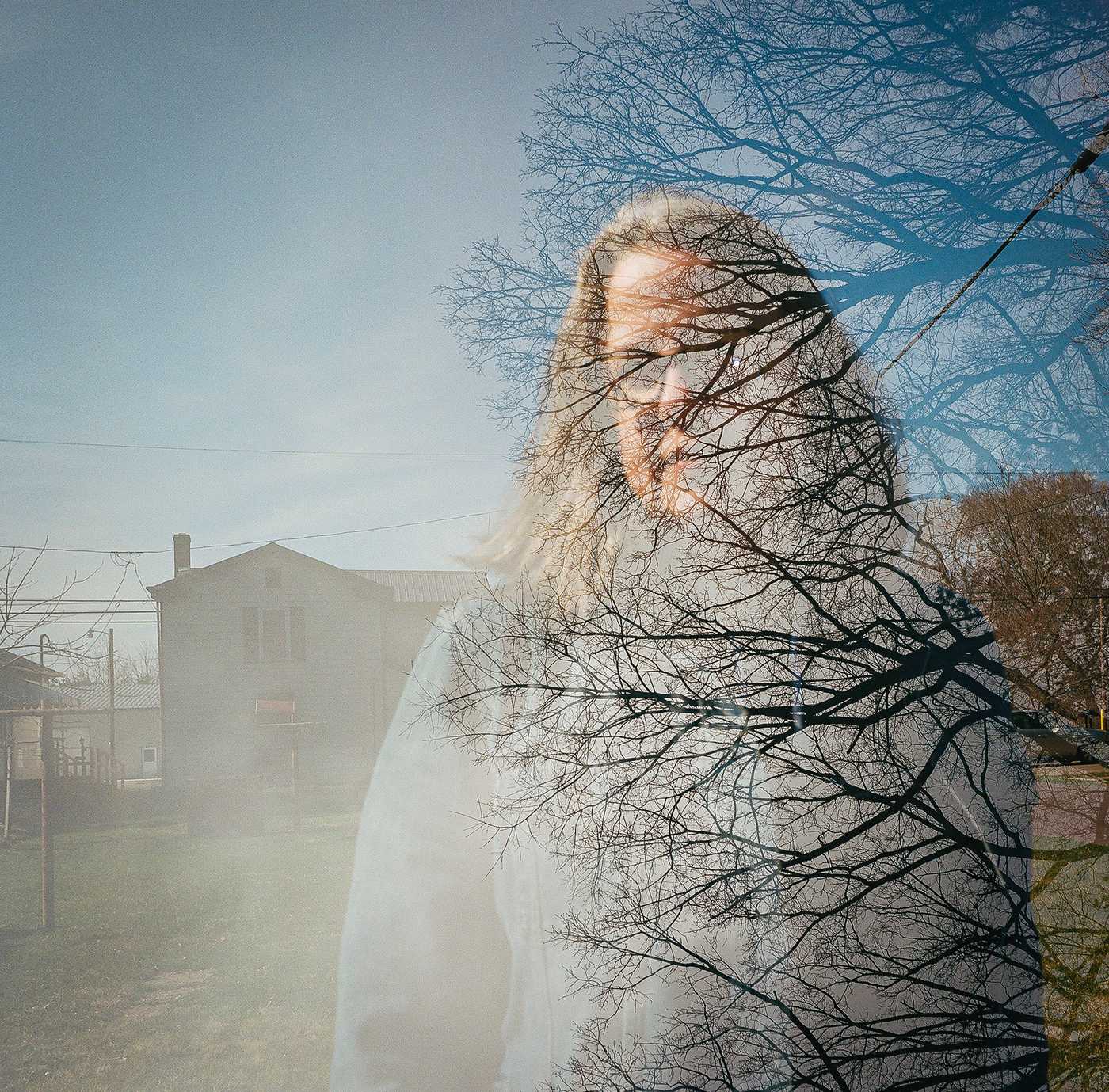
After her night in the Harvard infirmary, Kate came to him rattled and raw.
They began an EMDR session that he would document some 15 years later in his best-selling 2014 book, The Body Keeps the Score. Sitting 4 feet apart in his South End office, he moved his finger back and forth in front of Kate’s eyes. She began to see the images that had shaken loose the night before. Over time, she’d come to understand some as memories, some as imagined moments essential to her therapy. Van der Kolk writes that they made his stomach clench.
“[H]e took Polaroid pictures of me — and then I was submerged in water,” the book reports Kate saying. “I was gang raped by my father and two of his friends.”
As they worked through each of the images, Kate imagined fighting back against her attackers, and watching her childhood home be plowed under by a bulldozer. She described how the images in her mind manifested in her body — a soreness in her forearms and shoulders, like she was using new muscles. She pictured her mother telling her over and over again that she was sorry she couldn’t protect her, something her mother had never actually said. She imagined an out-of-body experience of holding herself as a child, and saying “You are safe now.”
Kate describes EMDR as a way of reexperiencing her traumatic memories on her own terms, where she feels empowered to imagine a different ending to those chapters of her life. “As I’m doing EMDR, it’s like I was able to rewrite the script,” she says. “It kind of gets into these nooks and crannies that you can’t really get to just with psychotherapy.”
Kate quickly became a “poster child” for EMDR, van der Kolk tells me — a “virtuoso.” To this day, he says he’s never seen someone respond as effectively to EMDR treatments. “I’ve seen hundreds of people with horrendous childhood sexual abuse,” he says. “But nobody ever responded quite as dramatically as she did.”
But could Kate trust her memories?
Since the 1990s, some researchers have questioned the validity of memories recalled by survivors of childhood sexual abuse, especially ones elicited during therapy many years later. They argue that patients could be vulnerable to the suggestive influence of a therapist, who might inadvertently spin a subject’s painful memory into a far more devastating “false memory” of abuse.
A famous — and controversial — 1995 study showed the power of suggestion in creating “memories” of something that never happened. Researchers told subjects that they had been lost in a shopping mall as a child, and included details that were supposedly provided by a family member. Many subjects said they remembered crying or feeling lost. But the story of them being lost wasn’t true — the researchers had made it up.

The recognition that memory is malleable has become a tool used in courtrooms to question the accounts of sexual abuse survivors, deployed by lawyers for defendants such as Bill Cosby and Harvey Weinstein.
But experts on trauma and memory, such as Harvard Medical School psychologist Jim Hopper, have noted that studies that deliberately plant false memories in people focus on an entirely different issue. Memories of stressful and traumatic events are known to be very well remembered for their “central details” — the parts of the experience that are most significant at the time. “Those aspects of the experience are actually very difficult to distort or replace with misinformation,” says Hopper, who has worked with van der Kolk.
The neurobiology of how those central details are strongly encoded in the brain is well-established, Hopper says. But just because a memory is well stored in the brain doesn’t mean it’s going to be retrieved or have language connected to it. However, a combination of the right context and cues can be enough to dredge up memories we may not have recalled for years.
“Yes, people can have false memories. And yes, people’s memories can get contaminated,” Hopper says. But to allow “false memory” research to discredit the memories of all victims of abuse “completely denies the existence of people who were repeatedly raped by their father and didn’t remember for 20 years.”




Kate remembers the public library in her hometown feeling like a safe space.
As EMDR has become increasingly widespread, it’s also become central to the so-called memory wars in the psychology world over the reliability of repressed memories. But its practitioners say the therapy’s hands-off approach avoids the possibility of planting thoughts in a patient. Van der Kolk himself has said the validity of the memory matters less to him than the fact a patient can process it. “I never felt a reason to question their accuracy; [Kate’s] experiences were real to her,” he writes in his book, “and my job was to help her deal with them in the present.”
But one memory researcher, Henry Otgaar of Maastricht University in the Netherlands, believes it’s unlikely people are capable of unconsciously repressing deeply traumatic memories. “No one has ever forgotten that they were in a concentration camp, none,” he tells me. “So if you take this idea of unconscious repressed memory, very, very seriously, then why don’t we see that in this group [of survivors] that really suffered severe trauma?”
(This claim is disputed. The Memory Project at Brown University, for example, has collected over a dozen studies of traumatized Holocaust survivors who struggled to remember their experiences at the camps or had forgotten them entirely.)
Otgaar says he’s “not against EMDR at all” and believes it does work as a therapeutic treatment. “However, for a legal case,” he says, “it might be problematic.”
Kate’s memories of her abuse did not all come together at once, but in waves. It would take years of therapy for her to make sense of them all.
“Secrecy and denial are such a big part of parsing out the memories,” she says. While she believed what happened to her was real, she routinely struggled with self-doubt “in the face of everyone telling me I was crazy.”
The late ‘90s were an intense and lonely time in Kate’s life. Outside of work, she attended weekly therapy sessions, days-long self-help seminars, and two or three Al-Anon meetings a week for families of alcoholics. It was hard to make friends in Boston, and relationships felt out of the question. “It’s tough to go to a cocktail party and be like ‘Yeah, I’m really doing this hard-core therapy work. I’m an incest survivor. I think I was prostituted,’” she says. There were few people she felt she could trust.
But in time, she assembled the pieces of her fragmented memories, facing them straight on: Being abused. The CB radio and the rest areas. And her father at the center of all of it.
It began to feel important to Kate to share her memories with others in her life, and to process their reactions. Her best friend, Maureen Jones, whom she met working as an administrative assistant at Harvard, remembers Kate wrestling with her decision to speak up. “It was, ‘If I do this, it’s going to expose and hurt a lot of people and stir things up, and do I want to put myself in the center of that storm?’” Jones remembers Kate saying. “She knew the minute she opened her mouth about this she would lose everybody.”

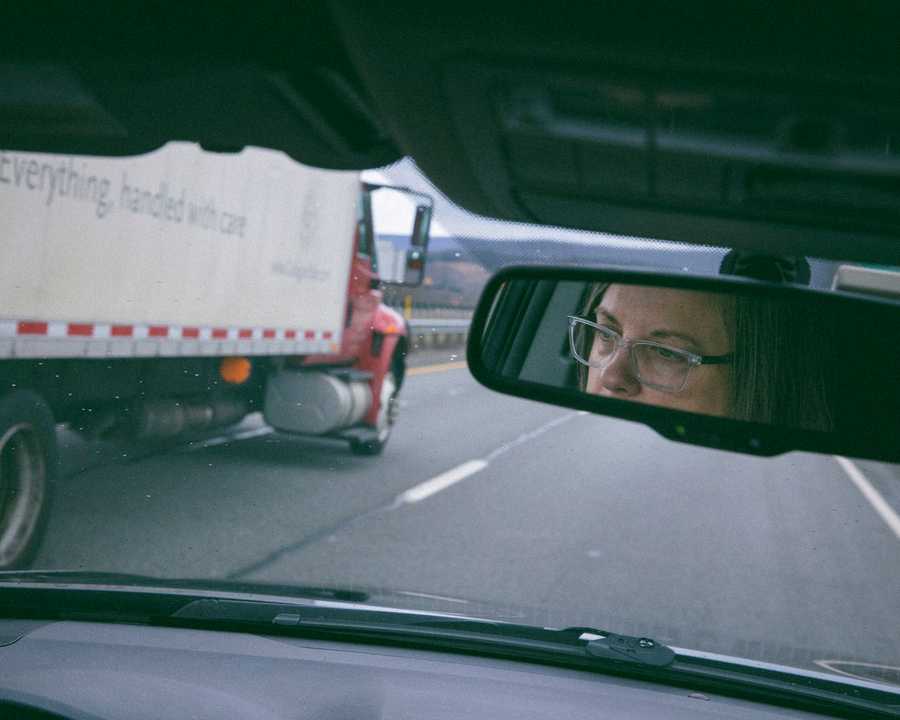
The highway stretching across the Susquehanna River, seen from a river bank in Kate's hometown. Kate crosses the bridge.
Kate finally summoned the nerve to confront her father over the phone in the summer of 1999, when she was 29. It didn’t go well.
He listened to her on the other end of the line, then Kate heard him call out to his third wife in a mocking voice: “Now she’s saying that I raped her.”
He turned his attention back to Kate. “Don’t you ever call me again,” he said, and hung up on her.
Kate faced a similar reaction when she called her maternal grandfather. They had grown close after her mother’s death, but when she confronted him about her memory of his sexual abuse, he turned on her. “How dare you?” he snarled, and said she was trying to get his money. He sent her a letter telling her to shut up about her accusations. Then he wrote her out of his will.
As Kate reached out to other relatives, she was accused of lying and trying to blackmail her family for money. After she mailed a letter describing the abuse to a former neighbor, she stopped getting Christmas cards.
A family friend, MaryCarol Larzelere, whose children grew up near Kate, says that their relationship soured around the time Kate started making accusations. “I sometimes felt that she would kind of enhance stories or make things up,” Larzelere tells me. “She would kind of come up with things that could give more attention to her or make you feel a little more sympathy. We couldn’t quite believe everything that she was saying.”
Later in the summer of 1999, Kate had a serious falling out with her older sister, Kari. The two had sparred since childhood, when fights between the girls sometimes left Kate with bruises and black eyes. They had never discussed any sexual abuse claims against their father, and they wouldn’t for a long time. The sisters stopped speaking and wouldn’t reconnect for 15 years.
Alienated from friends and family alike, Kate felt untethered. Like she was “looking down from a tightrope,” she says, “only to realize there was no net underneath.”
By the time I met Kate in 2012, she had spent decades interrogating her history, and had basically only one reason to believe that she was a sex-trafficking victim: her own memory. The only external sign she could point to was an X-shaped scar that she says her father cut into her forearm to show she belonged to him. But she was in her 40s, the scar had faded, and none of the people she knew either could or would corroborate her story. Within her own nuclear family, the other two living members weren’t even speaking to her.
At that point, it might have made sense to try to put the past behind her. She had worked her way through a master’s degree in gender and cultural studies at Simmons College, taking one graduate class a semester while employed there as an administrative assistant. She’d met and married her husband, Chris Price, and they adopted a son from foster care. And she’d landed an administrative job at the Wellesley Centers for Women, where she could also publish her academic research.
But Kate couldn’t stop.
She wanted to go deeper, and so she pursued her quest with a zeal that, at times, could be overwhelming. Kate wasn’t satisfied with just knowing that the abuse happened; she wanted to know how it could have happened, and perhaps more quixotically, why. What could have made her father do such things? For a long time, she suspected drugs were the cause, but today she’s convinced the real impetus was power.


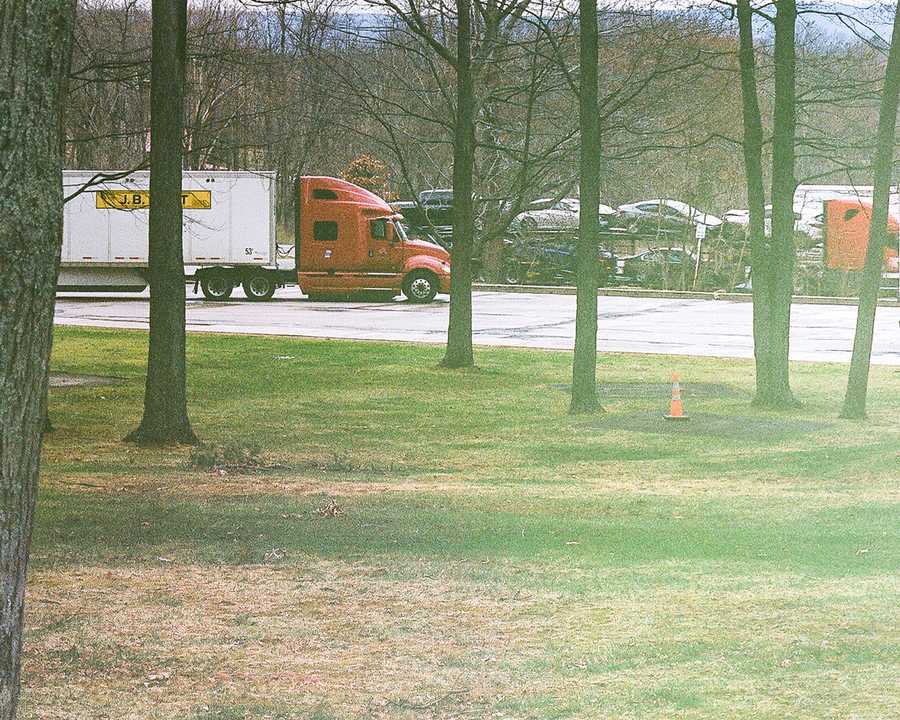

Several photographs of the Pennsylvania rest stop.
Much of Kate’s understanding of her abuse has been undergirded by her own research. And, like the trained sociologist she is, she documents everything with meticulous precision, using a color-coded Excel file. She pinged my phone with text messages at all hours, whenever a potential lead came to mind. I could be at dinner with my kids and suddenly find an urgent missive from her: Could I track down a pedophile from her hometown who was serving time in state prison?
Her husband, Chris — a fellow journalist who would eventually become a Globe colleague of mine — developed what the couple call “Kate management skills,” which help keep her calibrated when something triggers her memories or she feels emotionally fragile. I did the same, having her record audio diaries when she was having tough moments, or giving her space as needed, even if it meant not communicating for months.
But over time, we spoke to judges, attorneys, and law enforcement officials in Pennsylvania who know the highways and the crimes that happen along them. We spoke with detectives who broke up mafia crime rings. On my own, I knocked on the doors of both neighbors and strangers to interview people who might have heard something about the abuse.
It turns out it was relatively easy to see how Kate’s alleged abuse was plausible — child sexual abuse is so widespread. Two victim advocates in Bloomsburg, near where she grew up, told us that they had seen a flood of child abuse allegations in the aftermath of the 2011 Pennsylvania State University abuse scandal and the Pennsylvania attorney general’s 2018 grand jury report into sexual abuse in the Catholic Church. To demonstrate, they pulled open two file cabinet drawers full of allegations from 2019 alone. When one survivor speaks out, they said, it has a way of inspiring other victims to do the same.
Details Kate remembers also seemed within the realm of possibility to law enforcement experts. A former FBI agent said that the CB radio handle Chicken Plucker — the one that Kate recalls her dad talking to late at night — has the ring of truth. “Oh absolutely,” said Roger Young, who was the first agent to investigate a child pornography case in the United States, explaining that there is a whole coded language among pedophiles that references chickens or chicken hawks.
A local police chief who grew up with Kate recognized the outlines of another part of her story. As Kate described the assaults in the garage, Chief Bill Richendrfer’s brows furrowed in empathy. But as she began talking about being trafficked at a nearby rest area, he began nodding. “That was a hotbed for prostitution,” he said. The Pennsylvania State Police would often do stings there. “When we were younger officers, they’d always be tracking [it] down on the CB.”

Listen: Local police Chief Bill Richendrfer didn’t know anything about Kate’s story, but confirms hearing about illicit activity involving the rest area as a young police officer.
BILL: That was always a hotbed for prostitution when we were younger.
KATE: Really?
BILL: When we were younger officers, they'd always have – they were cracking down on the CB stuff.
KATE: And that's how my dad communicated with everybody.
BILL: Yeah.They’d monitor the CBs and listen for the key words.
BILL: It's ironic. You talk about the generation. There's a generation of people in this town that believe that child abuse doesn't and can't happen. It's because it's unheard of. It's an unthinkable crime.
KATE: Yeah.
BILL: So a lot of those people are like, it doesn't happen, you know?
Richendrfer doesn’t know whether children were involved at the rest area, but he says child sexual abuse is more common than people might think — even in places “where everybody was related to everybody somehow.”
“There’s a generation of people in this town that believe that child abuse doesn’t and can’t happen,” Richendrfer says. “It’s because it’s unheard of. It’s an unthinkable crime.”
There has never been a formal investigation into the allegations that Kate has made against her father. But in 2014, after she made a presentation about her research, an agent who worked in a Department of Homeland Security office in New Hampshire approached her. He worked with a division that investigated child pornography cases and offered to help.
The officer connected her with federal and state agents who worked on the Child Exploitation Investigations Group, a high-tech forensics team run by Homeland Security Investigations. From its offices on the 17th floor of the John F. Kennedy Federal Building in Boston, its staff coordinates global investigations seeking to identify victims of child sexual abuse, child pornography, and child sex trafficking.
An agent said the team could arrange for a “knock-and-talk” meeting with her father, sending an agent to his home to ask him a few questions. The impromptu visits can sometimes uncover dark secrets.
Kate initially hesitated. The thought terrified her; she worried her father might turn up and threaten her life. But then her husband, Chris, noticed a new photo on her father’s Facebook page: He was surrounded by children.
She got up the nerve to have agents coordinate a visit. “This is the most difficult thing I have ever done in my life,” she wrote to the agent. During a meeting with the agents ahead of the visit, a wave of fear flooded Kate’s body. She dashed out to go throw up in the bathroom.
Representatives from the Department of Homeland Security office in Boston declined to comment to me on the “knock-and-talk” at Kate’s father’s home, which took place in August 2016. But Kate later met with the federal agents and was able to photograph a copy of the two officers’ notes.
Kate’s father denied everything, according to the notes. He admitted to having problems with alcohol for the two years leading up to his separation from Kate’s mother, and told the investigators that he hadn’t had much of a relationship with his daughters ever since. He said Kate had called him asking him to apologize “for locking her in a closet and raping her.” He said it never happened and that they hadn’t spoken since.
Kate’s father also admitted to being a “bad father,” according to the notes, providing for the girls financially but spending little time with them. Asked about the CB radio, her father said he “used to radio his friends, but never used [it] to advertise his kids on it.”
Agents told Kate her father was “upset” about her allegations. “He said he wouldn’t admit to something he didn’t do just to give her closure,” one of them wrote.
Kate took all this in as she sat at a conference room table in the JFK building, looking out at an expansive view of Boston Harbor.
Although the words wouldn’t be recorded in their notes, she remembers the investigators telling her their visit ended with her father saying, “I’ve never done anything to hurt those girls.”
Something about that statement feels off, Kate thought as she swiveled in her chair. She hadn’t asked the agents to inquire on her sister’s behalf.
Why was her father voluntarily denying he’d hurt Kari?
By the fall of 2019, I’d known Kate for seven years, and her older sister, Kari, had loomed large in her stories. Their father had always pitted them against each other, Kate says, endlessly criticizing Kari, while treating Kate like the golden child. “My dad did just about everything to isolate us from each other,” Kate says.
And so, for most of her life, Kate had been convinced that her father’s special attention meant she’d been the “chosen one” for his sexual abuse.
But the sisters had reconnected since Kate and I first met, and as they gradually rebuilt their frayed relationship, Kari revealed to Kate that she had memories of their father sexually abusing her as well. She hadn’t been forthcoming with many details. When I finally met Kari at a Barnes & Noble in Wilkes-Barre, she was ready to say more.
Watch: Kate’s sister, Kari, describes her reaction to thinking about the basement in her childhood home. (Kari’s voice has been modified to protect her identity.)
KARI: It’s, it is a tightness in my chest and in my throat. It's, it's literally feeling my stomach just knots. And it's, I can actually feel it, like, right up through here. I actually have not thought about that room in so long, because it's just, yeah. The only word that's coming to mind right now is torture. And I don't know if that's physical, mental, emotional. Like, I just all I just think of is torture. And I have, I have no memory to, you know, back that up. But that is, that is the sole reason I will not go into a basement. Bad things happen in basements.
Kari immediately struck me as a take-no-prisoners kind of woman. Her gray hair was clipped short, and she wore mauve lipstick and heavy eyeliner. She had an acerbic wit. “Most people sign up for Ancestry.com to find their relatives,” she told me with a smirk. “I’m looking to know who to avoid.”
Kari was 52, which she’d learned was the average age a sexual abuse survivor comes forward about their abuse. I thought she might be hesitant to meet a reporter, but she was far from it. “I feel like it’s time,” she said.
As Kate sat to her right, Kari described her version of their childhood. “My father was very good at creating chaos . . . to entice fighting, and to create animosity,” she told me. In hindsight, she realized, “It was so much easier to keep us separated, because if we were together, we’d be powerful.”
Kari (who requested her last name be withheld to protect her privacy) shared the hurt she’d felt at always being judged second-best to Kate. And she admitted to hurting Kate as a result. Then she began revealing more about her abuse. Up to this moment in the bookstore, Kate had always believed she was the only one their father had trafficked to other men.
Kari told us her memories of sexual abuse were vague, a “pervasive gut feeling” that overrides her nervous system. The smell of motor oil makes her want to vomit. If her husband climbed into bed with beer on his breath, her blood would run cold. Because she believes she was sexually abused in her father’s basement workshop, she now refuses to live in a house with a basement at all.
“But I believe really where I was raped most was we had a garage in our backyard,” Kari said. “My father always told my mother we couldn’t go down there because there were river rats in there.
“The garage, and it had a walk down in the cement,” Kari continued, “so you could drive a car over it and work underneath the car.”
I looked over at Kate, who was nodding slowly, the horror of recognition beginning to gather on her face.
Kari said she was abused in that oil pit, and not just by her father. “I remember more other people in the car garage outside.”
Before Kari could complete her sentence, Kate abruptly pushed her chair back from the table.
“OK, I need a break. Bye,” she said. She walked away and began pacing the aisles of the bookstore.
Kari watched Kate go, then turned back to me. “We don’t talk about it,” she said.

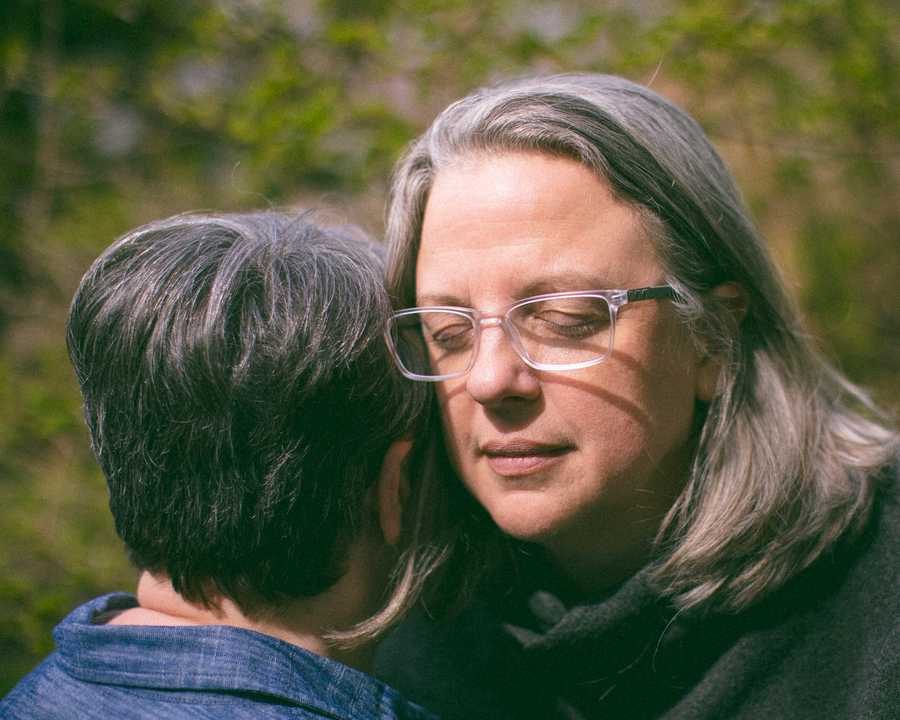
The back of Kate's childhood home. Kate with her sister, Kari (left).
Kari explained that she first began suspecting that she’d been abused as a child back in 1989. While taking a college psychology course, she scanned the attributes listed among sexual abuse victims in a textbook. “There were 20 things on the list, and I checked off all 20 of them,” she said.
It was so much easier to keep us separated, because if we were together, we’d be powerful.”
— Kari, Kate's sister, on how her father kept them divided
And yet she couldn’t speak the words. “My therapist asked me, ‘Were you molested?’ and I couldn’t admit it,” she said.
She said she still hasn’t tried to dredge up what she suspects are even worse things, though they lurk at the edge of her consciousness. She remembers being naked under oil-soaked blankets in the pit in the garage. Even now, when she’s most afraid, the smell of oil comes rushing back.
And she has recurring dreams of being lifted out of her bed at night as a child, still in her nightgown. As an adult, she had long slept with her bedroom door shut.
Later, as Kari prepared to head home, Kate’s mind was reeling. All her life, she’d believed she’d been the only one trafficked by her father. “I just . . . ‚” she said to Kari, trailing off. “I didn’t know.”
Whenever anyone asked — and they inevitably did — Kate would explain that she was not prepared to file a legal claim against her father.
She’d spent years of her professional life studying sexual assault cases, and she didn’t think she’d have the evidence. Should a case somehow make it to trial, Kate knew it would be massively disruptive to her family and career, and all for a frustratingly slim chance of winning, at least judging by the stark national statistics. Less than 1 percent of rapes result in felony convictions.
I always got the sense that, after decades spent taking control of her life and story, what Kate feared most was losing that control to a legal system that is too often stacked against victims.
The day after we met with Kari in 2019, we visited the Columbia County district attorney’s office in Pennsylvania to meet with advocates Frances “Franny” Fraley and Janelle Neidig, who specialize in assisting victims through the legal process. As Kate walked through the brownstone arches of the courthouse, she realized that after decades speaking about human trafficking in academic circles, she was walking in as a victim and, for the first time, she wouldn’t be alone if she made a claim.
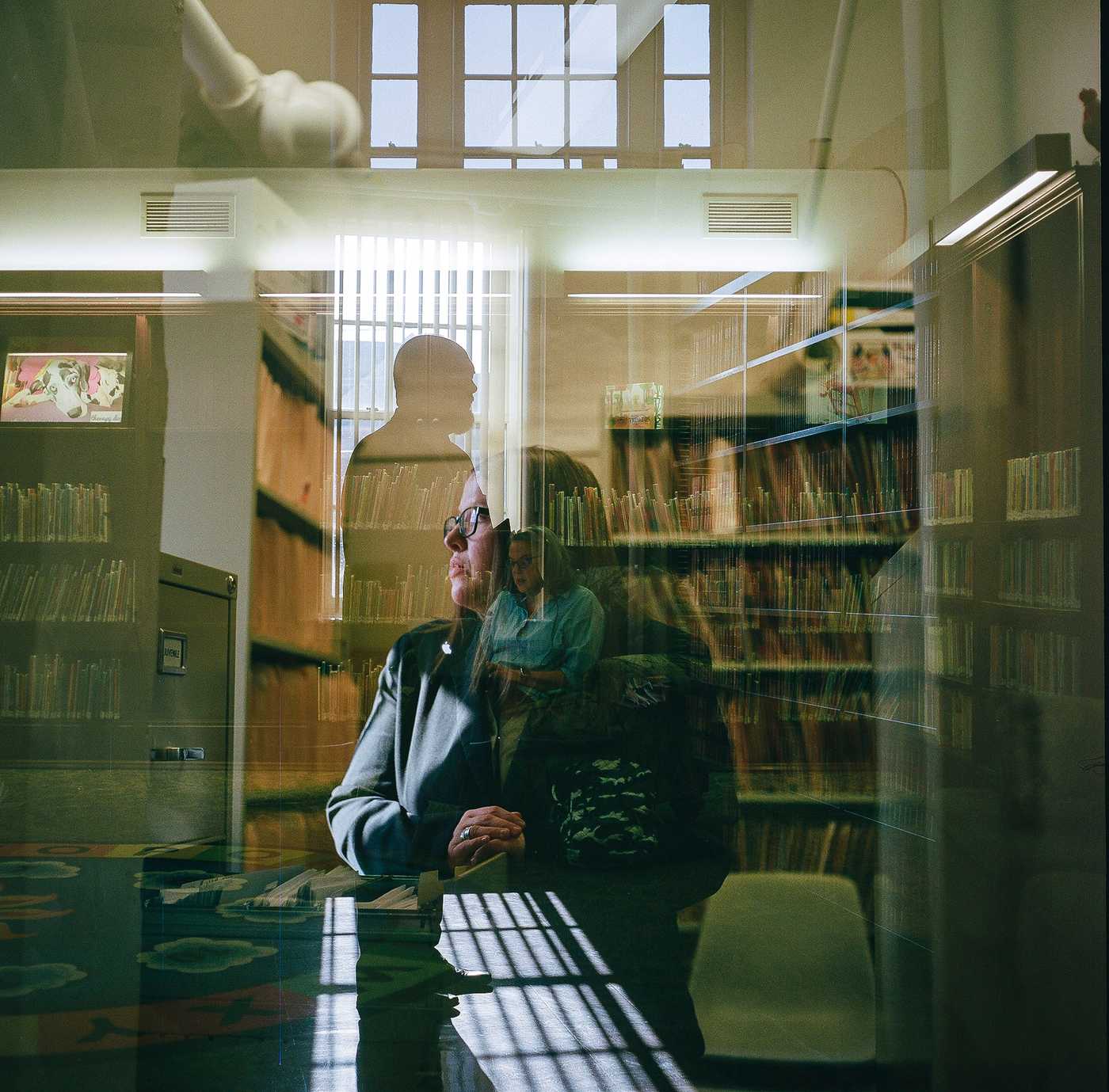
Kate was 49, and the statute of limitations for victims of sex crimes in Pennsylvania was 50 at the time. But even if her sister testified, she told them that she couldn’t imagine finding the collection of voices she’d need to make her case.
Fraley was blunt: “Jurors want to see not someone like you. My gosh. You’re educated, you’re polished, you speak well. And I feel horrible saying that. You are not their textbook version of a victim,” she said. “They want to see bruises, they want to see battering, they want to hear about ripped clothes . . . It’s awful what jurors want.”
So when Kate turned 50 the following year, she felt something akin to relief.
But I later learned that the Pennsylvania Legislature had changed its statute of limitations laws a month after we visited the courthouse, removing them entirely for victims of crimes such as trafficking, rape, and incest if they were under 18 at the time of the abuse. Because Kate was 49 when the law changed, she can still bring a suit against her father. She remains unsure what she’ll do. “The part that would scare me is knowing the way that [lawyers] rip into victims,” she says.
Even if Kate changes her mind, it’s not a sure thing that a case would be pursued. Andrea Levy, the legal director of the Pennsylvania Coalition Against Rape, questions to what degree a prosecutor might be willing to try the case after so much time has passed. It’s incredibly difficult to get prosecutors to file charges in rape cases, she says, even those with fresh evidence.
It highlights the challenges faced by people like Kate, who tend to wrestle well into middle age with reporting their abuse. “Delayed reporting is the norm. And it is a tragedy,” Levy’s colleague, policy director Donna Greco, says. “It is so common for people to hold on to this, for so many years, and our laws don’t then line up with that reality.”
Kate knew she would face one more hurdle if she ever pursued criminal charges: “My entire family except for Kari is very invested in me being crazy and me doing this for the money,” she says. “If they actually had to believe me, they would have to face the fact that my father has duped them their entire lives. And that’s a pretty hard pill to swallow.”
Watch: Kate sits down with two victim advocates in Pennsylvania to talk through her story and the culture of silence around child abuse and trafficking.
KATE: In my experience from here, it was that we were disposable. Like that was my experience of things, you know, that it was just like that's what those people do to one another. I just did everything I could to survive, you know, until I could get out of here. Like until I just knew as like all I need to do is be 18, then I'm gone. The bottom line with all of this is I'm finally more angry about everything that happened to me than I am scared of them. That's really what it all comes down to. This is about me, like this is about healing and this is about all the other people who are going through this. And how do you heal and how do you hold people to account? I'm really mad about the systems that enable that stuff to continue to happen.
It can be hard to reconcile the father Kate describes from her childhood with the person his friends and supporters know today: an elderly man whose Facebook photos are mostly of him and his dogs, or swinging in hammocks in the sunshine. A newspaper once wrote a story about his hospital volunteer work in which he handed out angel keepsakes to cancer patients, in a show of solidarity as a cancer survivor himself. The story called him an angel, too.
When I started calling Kate’s father’s friends and relatives — all of whom I am not naming to protect their privacy — most of the responses were strikingly consistent:
“I don’t think it’s true, I really don’t. I think they just made up a lot of stuff,” said an aunt by marriage. “I think they were spoiled girls.”
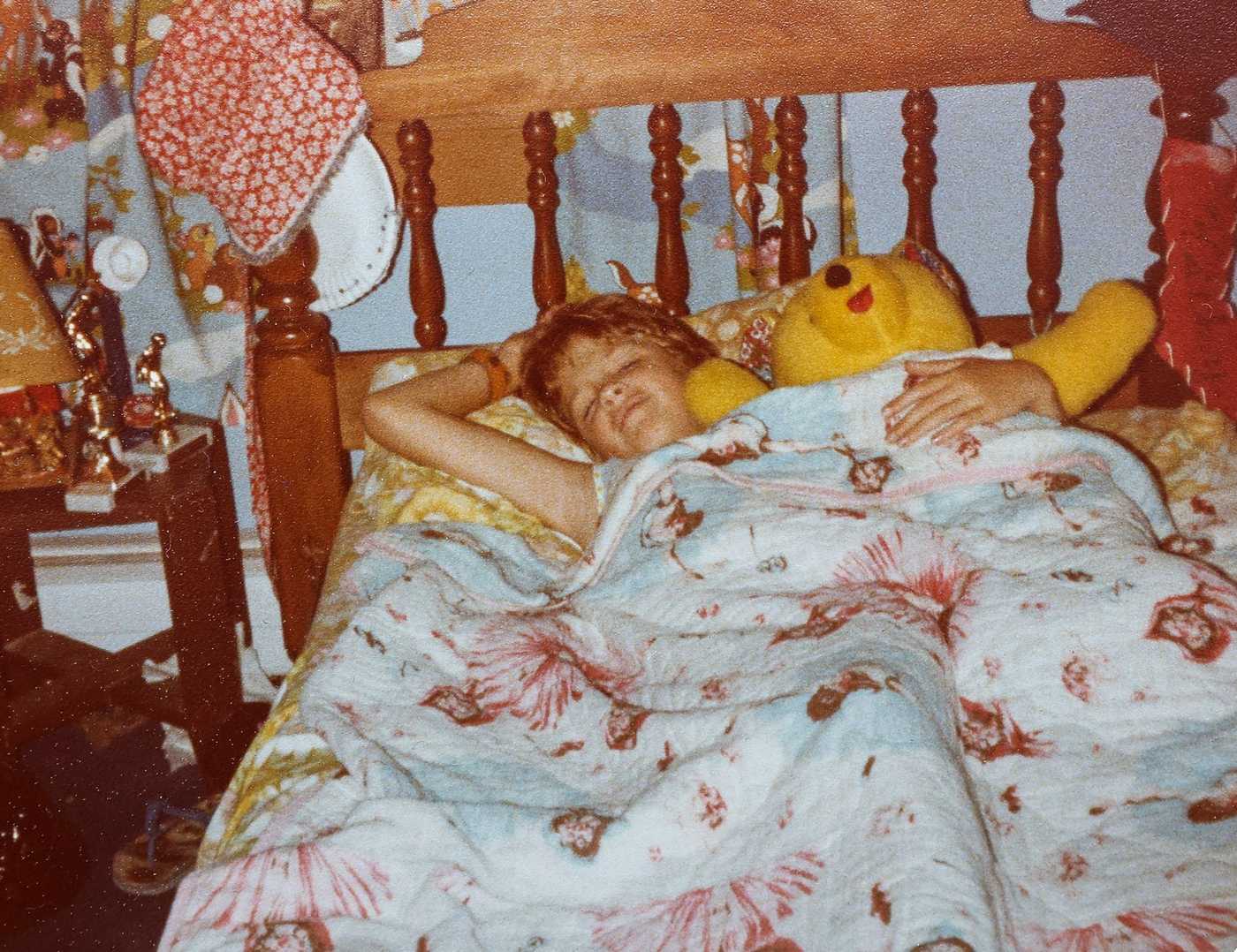
“There was never any hint or clue that anything was amiss,” said a cousin. “I find it very hard to believe.”
A close friend of her father derided me for suggesting abuse. “I have no clue as far as that goes,” he told me. “Even if I did, I wouldn’t say anything.”
One family member who acknowledged Kate’s allegations could theoretically be true — “There’s hidden skeletons in every family” — said they wouldn’t change his opinion of the man, even if they were. “He’s a good person. He’s a kind soul to everybody.”
But the second wife of Kate and Kari’s father has a darker view of the way he behaved in private. When I tracked her down at the pharmacy counter where she works, she said she didn’t know about Kate’s allegations of sexual abuse and trafficking, but she did know about what she described as her former husband’s sometimes brutal appetites.
“You know, he was a very sexual man,” she said. Later, over dinner, she claimed that during the decade they were together, she was a victim of his abuse: Kate’s father liked rough sex — a lot of it. Her eyes welled up with tears when she recalled the nights Kate’s father forced her to have sex.
After collecting over a dozen other people’s opinions about Kate’s father, I was ready to talk to the man myself. On a Wednesday morning in March, I called him at his home in a Midwestern retirement community and left a message at the front desk saying I was hoping to reach him. That afternoon, I got a call back from his third wife, and as I started to explain the reason for the call, she quickly cut me off.
“I’m going to stop you right there sweetheart,” she said. “We have nothing to do with those girls. We want no part of anything they say or do.”
In April of this year, Kate and I traveled back to Pennsylvania, knowing it was unlikely that we were going to find some sort of smoking gun. And people we talked with, such as Scott Price, the current chief of the Bloomsburg Police Department, emphatically drove that point home.

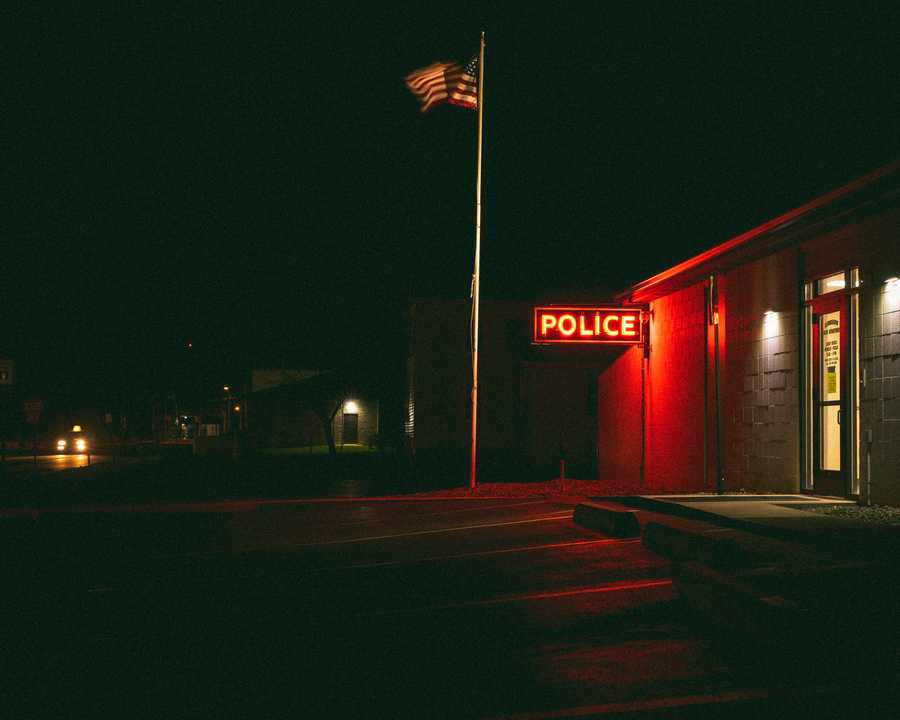
Bloomsburg Chief of Police Scott Price. An exterior view of the police station.
An average of 36,000 vehicles pass along I-80 each day, the equivalent of a small city, Price (who is not related to Kate) explained. And numbers like that can make it maddeningly difficult to track down the perpetrators of crimes. There are many cases along the highways that still haunt him, like the little girl in the ‘80s who was abducted from her home not far from the rest area Kate remembers, only to be found wandering alone at a truck stop in Pittsburgh several days later.
The abuse Kate speaks of, he said, is “entirely plausible and still happens today.”
That night, I looked through Kate’s Excel spreadsheet again. I knew I still had to talk to Gloria Cromis, a family friend who was close with Kate’s mother. Their children had swum together, and, later, she and Kate’s mother worked together at a hospital.
At one point, Gloria told Kate she recalled her father speaking harshly to his wife and daughters. She told Kate, “I almost said something once . . . ” before trailing off.
For years, that phrase would ring in Kate’s ears. But the letter she sent Gloria went unanswered.
My letters did, too.
I found Gloria at home with her husband, John, and daughter Nicky. I arrived just after 7 p.m., as Red Rock Mountain in the distance slipped into darkness.
As I explained my work with Kate, John speculated that Kate and Kari were making their claims in a bid to increase their inheritance. But after I told John that Kate had been cut out of the only will that mattered — her grandfather’s — his tone changed. For the next hour, as John led a lengthy discussion of the abuse allegations, Gloria sat quietly.
Eventually, Gloria said that Kate’s mother had told her that Kate’s father had been physically abusive to her and the girls. “He would really beat her,” she said.
“Yeah, I knew that,” John said, jumping in again. “That came out in conversations” he’d had with Kate’s father. He could be “as mean as cat shit.” We moved on to discussions of CB radios. John had been a hobbyist back in the day.
Finally, I turned back to Gloria, who had been listening to her husband talk. In the letters I’d sent to their home, I’d said that Kate was a trauma researcher looking to understand her past, but I hadn’t brought up allegations of sexual abuse or trafficking. Now, I asked Gloria if that had ever come up with Kate’s mother.
Gloria’s jawline tightened, and her eyes squinted as she spoke.
“[We] worked down at the [hospital] together. . . . She had a small apartment and I would go down a couple times after work,” she said. By that time, Kate and Kari were grown and their father had moved out of state. “She asked me — she practically begged me — not to say anything to the girls.”
“What did she say exactly?” I asked.
Gloria heaved a deep sigh. John asked if she wanted him to leave the room. “No,” she said, then turned to me.
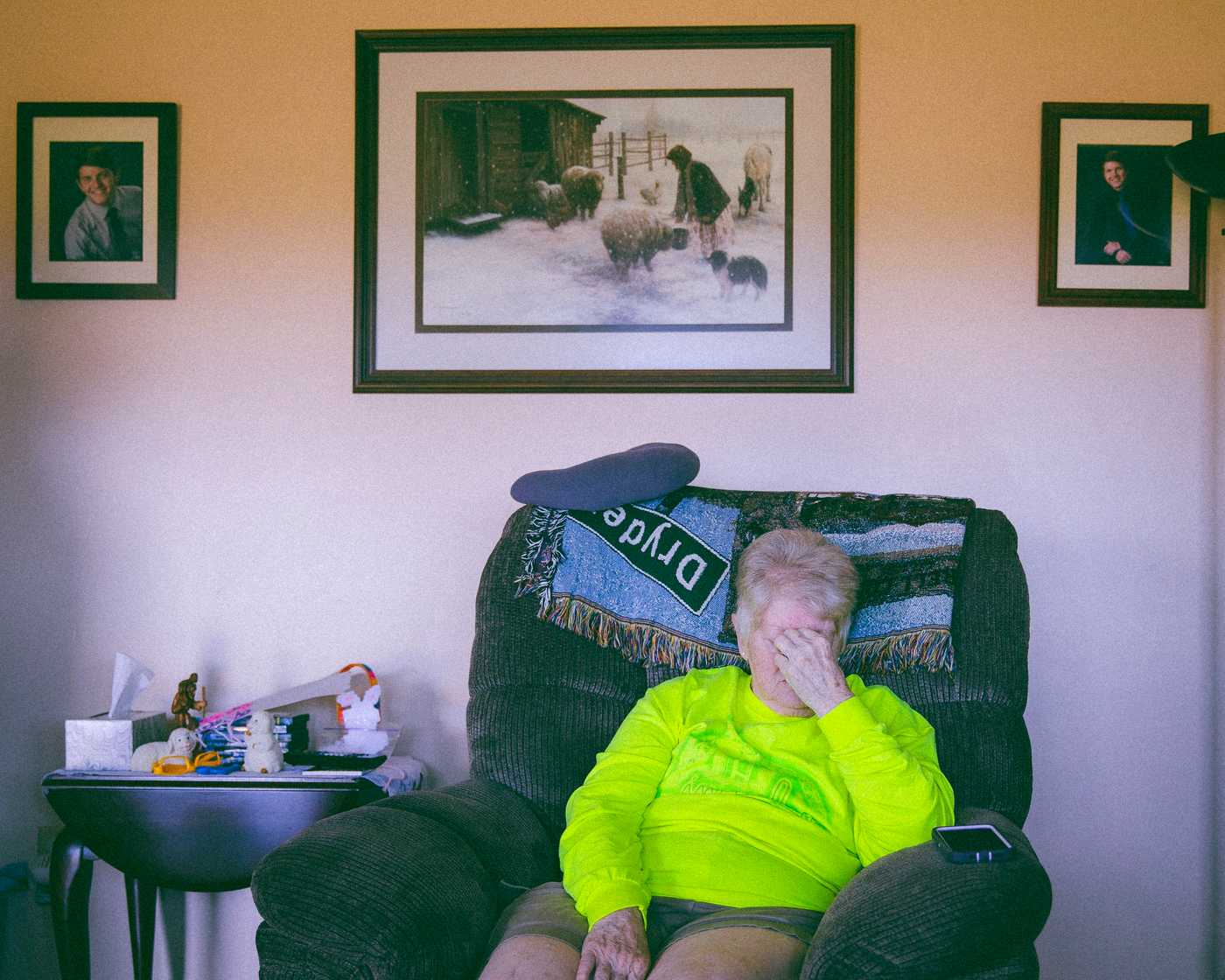
Listen: Gloria Cromis, a friend of Kate’s mother, recalls what Kate's mother had confided in her about trafficking. (Kate goes by Kathy where she grew up.)
GLORIA: They were young. And she heard him on the CB sort of, you know, like, pushing them out. How do I want to say that? Fencing them out? Or, you know, like, pimping them out. And she came to him, you know, she ran this by him and he really got nasty with her. And said, you know, “Just let me alone; I know what I’m doing.” I says you held this in all this time? She says, “I had to. It was our lives with him being the way he was. He had a temper and everything.” She had to keep this into herself. And after they were separated and divorced and she was living down there, she told me and I says, “I have to tell this to [Gloria’s husband] John.” She says, she begged me not to. And believe me, it was hard not to say anything to you. But because you know, we had the kids and of course, they were grown up and gone out and everything. But she made me promise not to say anything. And to this day, I kept it in. I couldn't say anything to Kathy or anything. Because I didn’t want to have hard feelings with Kathy, because Kathy was…
JOHN: Like a child.
BOTH: One of ours.
GLORIA:I kept getting letters from you. And I thought, Oh, my God. I can't. I just can't. And when she called me, when I was up at Walmart and she called me and said that you were here, and I thought, Oh, my God. I have to go through this. But I'm, I'm glad you came. And I'm glad I got it out. Now we know what he was like.
“They were young. And she heard him on the CB, sort of, you know, pushing them out,” she said, her voice shaking. “Fencing them out, you know, pimping them out.” Her voice got firmer as she said it out loud.
My heart began throbbing in my chest. John’s eyes grew wide. Nicky sobbed into her sleeve.
“Can you tell me what else you remember — when did she tell you?” I asked.
The abuse happened when the girls were swimming age, she said. At the time Nicky and Kari must have been about 9, so Kate would have been 6. As Gloria remembers the conversation, the first time Kate’s mother heard him on the CB in the garage pimping out the girls, she said nothing. But the second time she heard him, she confronted him. “She went to him and he got really nasty with her and said, ‘Let me alone, I know what I’m doing,’” Gloria told me.
At the time they spoke, likely in 1987, Gloria asked Kate’s mother how she could have kept the secret all this time. “I had to,” she answered. “It was our lives.” The women never spoke of it again.
Gloria told me that she struggled with knowing, and that the memories had given her nightmares. Nicky asked her why she had never said anything. She told us she’d had brain surgery in 1987, and her memory took time to recover.
“I sort of forgot about it,” she said to me, “until I kept getting letters from you.”
It was late and Kate was on the couch when I arrived at the Airbnb where we were staying. “How are you, are you OK? You must be exhausted,” she said as I walked in.
My hands felt like oven mitts, like my fingers were fumbling everything.
I sat down beside her and tried to sort through the conversation, methodically at first, and then I blurted out: Your mother told Gloria that she found your father pimping you out on the CB radio. She caught him when you were still young, 6 or 7.
“Oh my God,” Kate said. She started weeping and dropped to her knees. “I knew it, I knew it, I knew it, I knew it,” she said, as her body shook with sobs.
They were young. And she heard him on the CB, sort of, you know, pushing them out. Fencing them out, you know, pimping them out.”
— Gloria Cromis describes when Kate and Kari's mother told her she knew what their father was doing
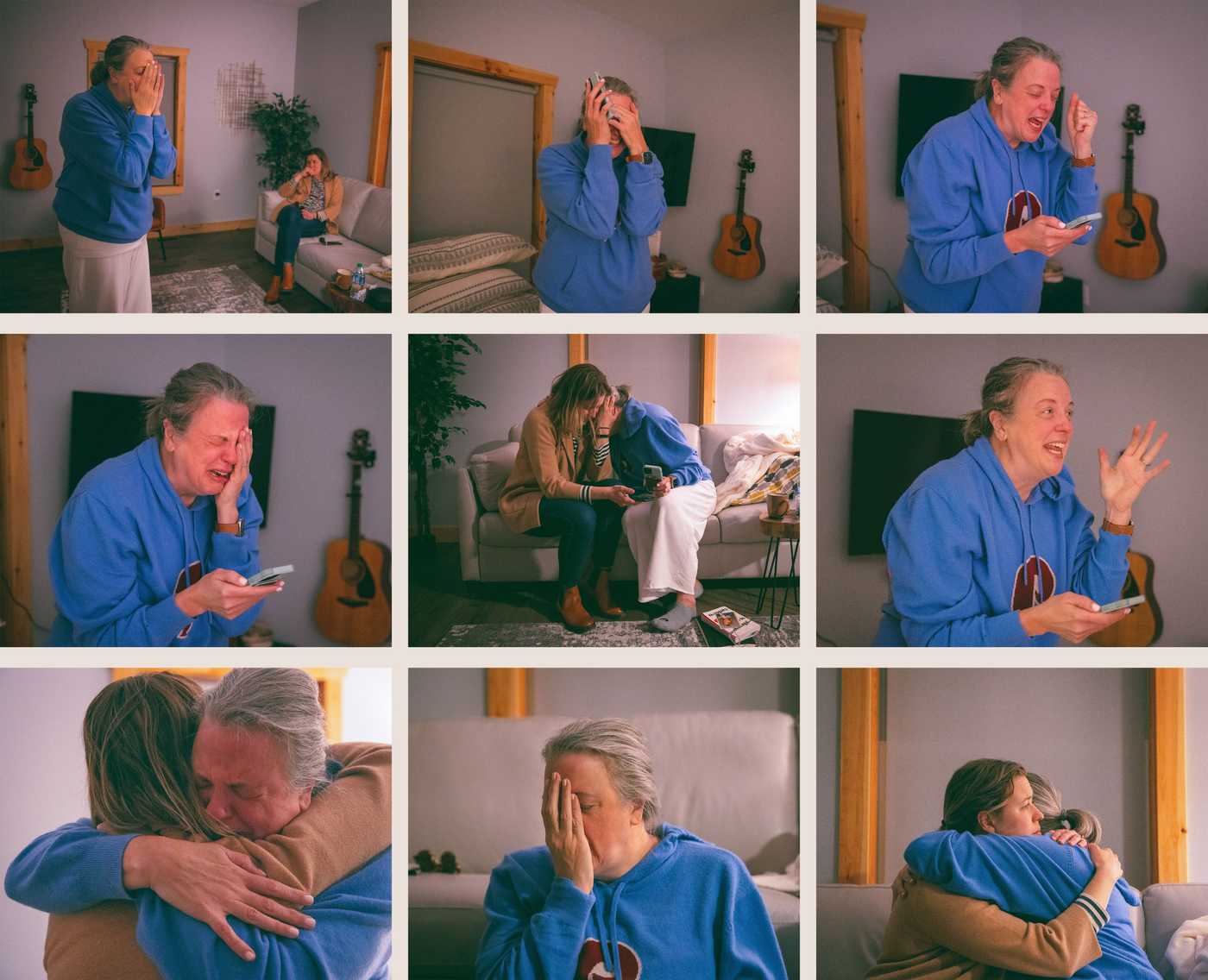
Listen: Kate describes how she feels after learning what Gloria remembers being told.
KATE: I still can't get all of the information and the words like ordered in my brain. Just the fact that my mom knew. That Gloria knew. And nobody ever told us, even when my mom was dying. To me, it's just further indication of the brain just does what it needs to do to survive. You know, Gloria just tucked it away and then had brain surgeries shortly thereafter. And it just the words didn't come out until she was talking to Janelle. You know, it's the unthought known. She had forgotten, not forgotten about it. She had nightmares.
The revelation made her feel both vindicated and mortified at the same time. Her beloved mother knew about the abuse all along. “She knew for so long, and she didn’t even tell us when she was dying,” she said. “All this time, when she was on her deathbed, she asked if she was a good mother.”
Kate frantically called her sister to relay what she had just heard. Over the speakerphone, I could hear Kari start to cry. Gloria had heard about the abuse years after it had stopped, but that left both women convinced others must have known at the time.
“They knew and they didn’t help us,” Kari said. “They left us there.”
It was well past midnight, and the sisters wondered how they’d possibly sleep. When Kate hung up the phone, she was thinking about the night that she ran screaming from her childhood home, and how her mother grabbed her on the cement path to the garage, afraid the neighbors might hear. “I can’t believe she pulled me back into that house,” she said.
Kate would stay up all night.
Kari would sleep with her door open for the very first time.
This spring, I traveled to an assisted living center in the Midwest in the hopes of speaking with Kate’s father. I arrived just in time to find him eating dinner at 4:40 p.m.
“You’re not gonna get me mad, are you?” the old man asked me, a hint of antagonism in his voice. His skin hung loose on his unshaven face, and his eyebrows arched up at me quizzically as I explained why I had flown hundreds of miles to find him.
He was slightly unsteady as he pushed his walker toward me, then, after I explained that I am a journalist, he led me to a quiet area in the facility’s lobby and lowered himself into a chair. He had a cross tattooed on one hand, and he wore a medical alert device around the wrist of the other.
“I think I finally come to my brain about who you are,” he said. “Go ahead.”
I explained that I was writing a story about his daughter, whom I had known for 10 years, and that I felt that the story would not be complete without hearing from him.
“Well, I gotta be real honest with you, I have no story,” he told me, shaking his head. “Because first of all, I probably shouldn’t even be sitting here with you. And that’s just my personal perspective.”
I sat, listening.
“This thing has hurt me from the first day she said it,” he continued. “And it’s 195 million percent — I don’t want to call it a lie. Because I don’t want to say my daughter’s a liar, OK? It’s just, it never happened. Nothing like this ever happened.
“The only thing that was wrong in the raising of our children was that I was a lousy father,” he said. “I was a 195 percent provider. I worked jobs, all kinds of jobs, to bring money in for them kids.”
At that moment, an attendant at the assisted living complex stepped in between us. “You need to go back to your apartment please,” she admonished him.
He got up. As he was led away, I told him I’d spoken to other people who said Kate was telling the truth. He looked back at me, then shuffled down the hall.
I left a letter for him at the front desk explaining what I had been told. Back at my hotel, I called Kate. She wasn’t surprised that he denied everything. But she was sure the meeting had unsettled him, especially given the fact that there was now someone else who had heard about the abuse.
The next morning, I spoke with Kari on the phone.
“Last night he went to bed afraid,” she said. “That was my whole life.”

In the weeks after I first spoke with Gloria Cromis, Kate was “flattened by grief.” She’s devoted her life to confirming a truth she believed at her core to be real, and says that for the first time, she feels a sense of peace. But like everything in her journey, it’s a complicated one.
She believes now that after her mother confronted her father, he stopped abusing her in the garage. Instead, she thinks he began trafficking her at rest areas and other places nearby. Kari recalls him telling her mother he was taking Kate fishing.
For Kate, being believed isn’t harder than questioning herself. But the knowing is still devastating. “Just the fact that my mom knew, that Gloria knew,” she says. “And nobody ever told us, even when my mom was dying.”
The sisters now think their mother pushed them to get an education and find a path out of Pennsylvania to escape their past. If she couldn’t give them a childhood, she could at least give them a future. “She was hoping that we would just forget about it,” Kate says, “not knowing how the mind works.”
But the memories — as unthinkable as they were — stayed with Kate and her sister, forming an elemental part of the women they’d become. They stayed with Gloria, too.
They were never really lost. It just took time.
It’s further proof, Kate says, “that the brain just does what it needs to do to survive.”
Watch: Kate reflects on what her mother knew – and whether her mother could have made different choices.
KATE: Just as I try to sort through this stuff about my mom knowing, and I really get that she thought – she most likely thought that the trafficking had stopped after she confronted my father. And left for a week. But he still hit Kari. He still hurt us. And he certainly kept hurting her. I remember the bruises being visible always with her. And so, I know it's not fair of me to ask that question that I hate so much is, Why didn't she just leave? I hate that question. As a feminist, as a scholar, as a – there are a million reasons why she didn't leave. And at the same time, when I was a little kid and I remember that little girl, I wasn't a feminist scholar. I didn't look up all of the answers. I just knew I was scared all of the time and I thought I was going to die all of the time. And I just wanted it to stop.
Resources: If you believe a child is being sexually exploited, contact the National Center for Missing & Exploited Children’s CyberTipline at CyberTipline.org. Or, call 1-800-843-5678, 24 hours a day, seven days a week. For free training on ways to recognize child sex trafficking, visit missingkids.org/trafficking. And, if you or someone you know is in emotional distress, call or text the confidential Suicide and Crisis Lifeline at 988.
Janelle Nanos is a Boston Globe staff writer. She can be reached at [email protected]. Early support for this project provided by the Schuster Institute for Investigative Journalism at Brandeis University.
Credits
- Reporter: Janelle Nanos
- Photographer: Erin Clark
- Editors: Scott Allen and Francis Storrs
- Photo editors: William Greene and Leanne Burden Seidel
- Video production and editing: Andrea Patiño Contreras
- Video editor: Anush Elbakyan
- Audio producer: Amy Pedulla
- Project management: Christina Prignano
- Design and development: John Hancock
- Audience engagement: Maddie Mortell
- Copy editors: Stacey Myers and Carrie Simonelli
- Quality assurance: Nalini Dokula
- Additional research: Jeremiah Manion
© 2022 Boston Globe Media Partners, LLC
